The Man to Send Rain Clouds Theme of Continuity and Change
These are the best astronomy images of the year
The best astronomy photos of the year invite the eye upward and outward, bringing stunning views such as auroras above Earth and visions of a stellar nursery 554 light-years away.
These images, from the finalists in the 13th annual Royal Observatory Greenwich's Astronomy Photographer of the Year competition, are a beautiful reminder of the size and age of the universe. One image, created by photographer James Rushforth, shows the comet NEOWISE passing over Stonehenge, a structure that didn't even exist when the comet last streaked by Earth 6,800 years ago.
Held in cooperation with BBC Sky at Night magazine, the competition drew more than 4,500 entries from 75 different countries. Winners in 12 categories will be announced on September 16, 2021, and the winning photographs will be exhibited in the National Maritime Museum in London. Here are the shortlisted competitors.
A Daytime Transit
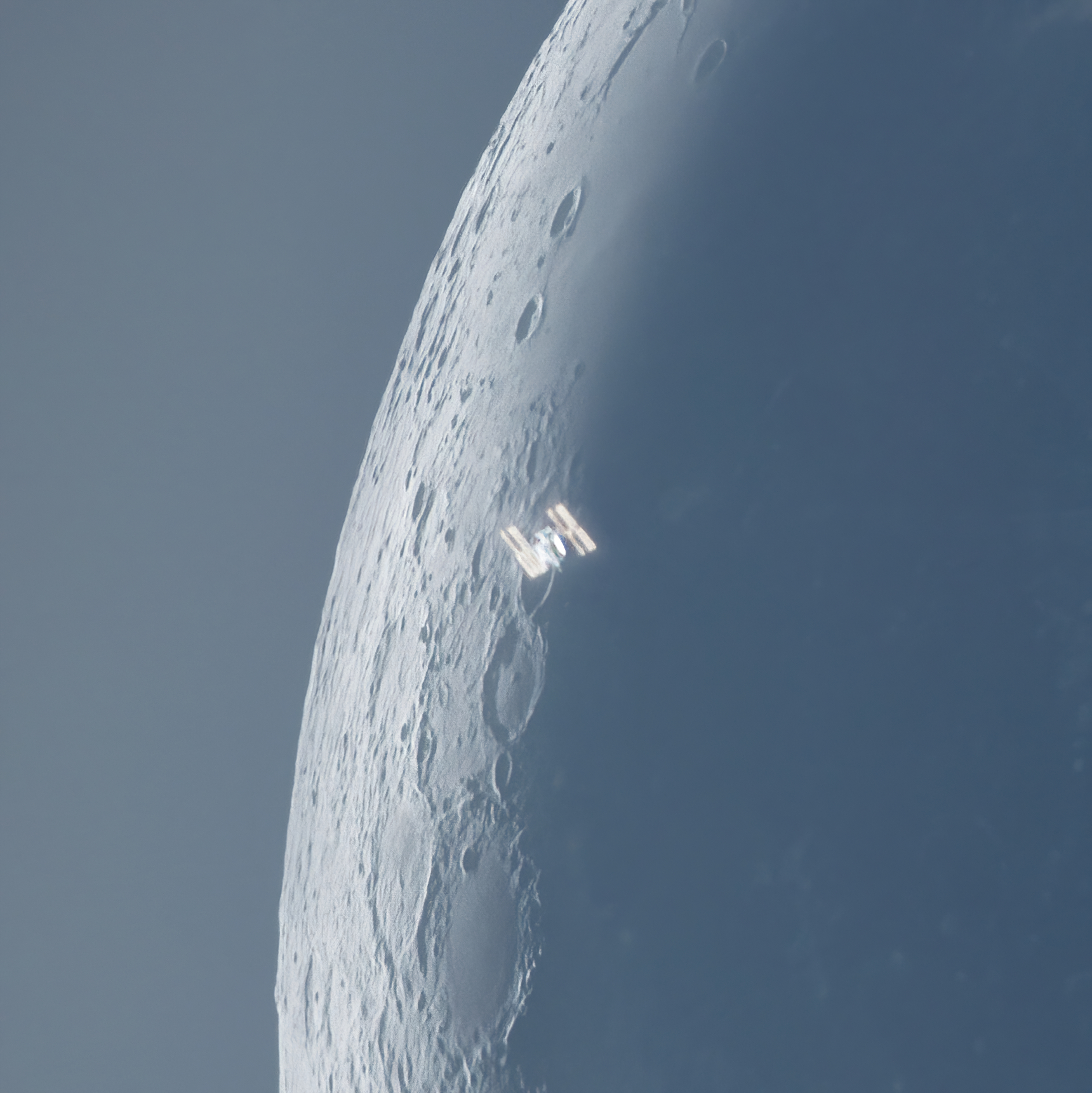
(opens in new tab)
The International Space Station travels across a waning crescent moon in this daylight shot. Photographer Andrew McCarthy of Elk Grove, California, used two cameras and two telescopes to capture the images, which he then blended together into a seamless scene.
(For the monochrome image: McCarthy used a Celestron EdgeHD800 telescope at f/10, Hobym Traveller mount, ZWO ASI174MM camera (opens in new tab), 1,000 x 1-millisecond exposure. And for the color, he chose the Orion XT10 telescope at f/10, Hobym Traveller mount, Sony A7II camera, ISO 200, 1-millisecond exposure.)
Aurora in Murmansk
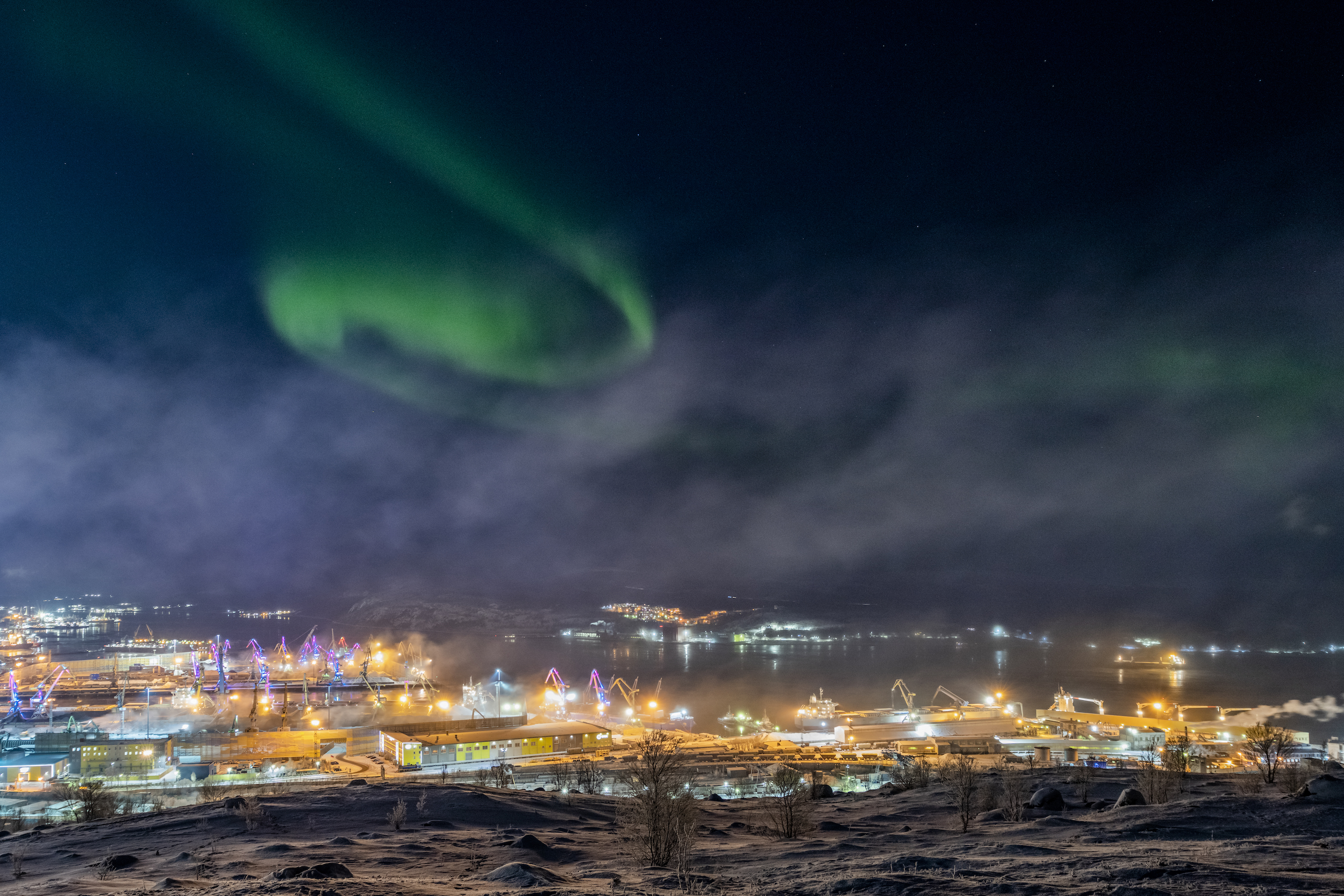
(opens in new tab)
The aurora borealis outshines the lights of Murmansk, Russia, in this photograph taken in January 2020. Photographer Vitaliy Novikov had to wait for a strong solar flare so that the aurora was visible despite the city lights.
(To capture the skylights, Novikov used a Nikon D850 camera (opens in new tab), 24 mm f/5.6 lens, ISO 1000, 0.8-second exposure.)
Bicolor Veil Nebula
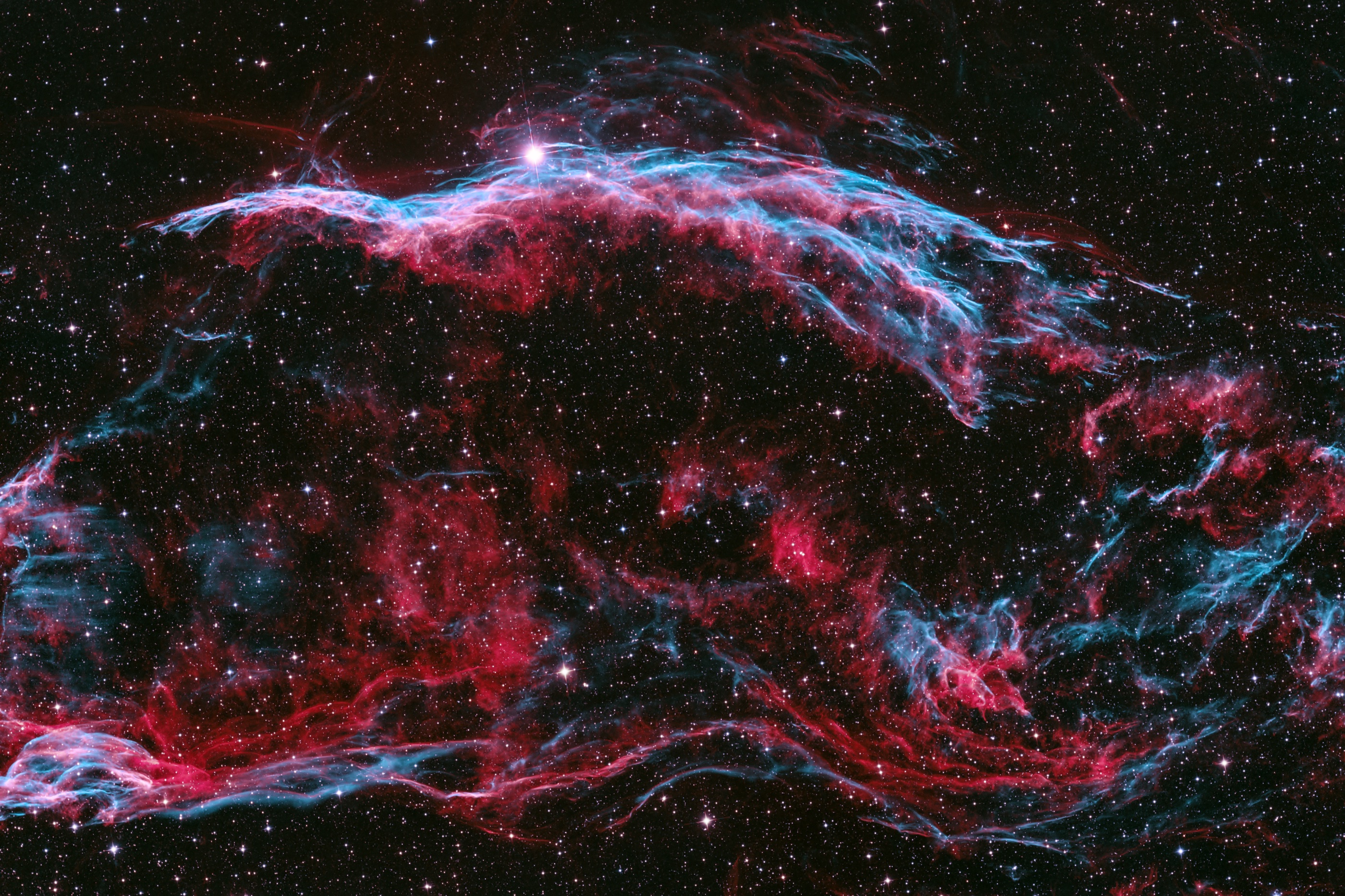
(opens in new tab)
This image was stitched together from shots taken of the Veil Nebula in June, July and August 2020. The nebula is the remnant of a giant supernova explosion — the death throes of a massive star. The image was snapped from Pest County, Hungary.
(The photographer used a SkyWatcher 200/800 Newton Astrograph telescope at f/4.6, Astronomik Ha and OIII filters, SkyWatcher NEQ6 Pro mount, Moravian G3-16200 Mark II camera, Ha-OIII composite, 12 hours total exposure.)
Château de Chambord
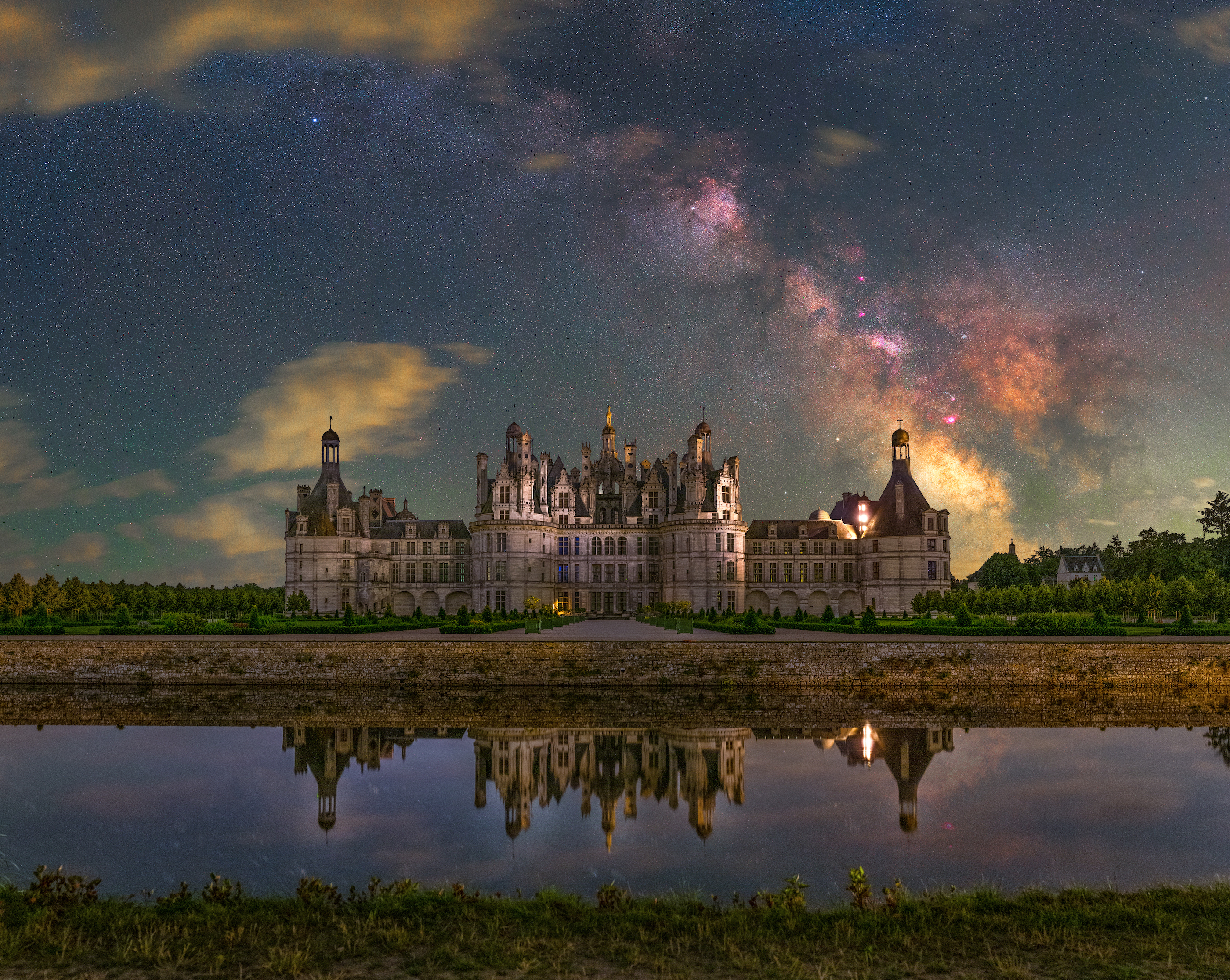
(opens in new tab)
This chateau in Centre-Val de Loire, France, was a photographer's dream and a challenge for Benjamin Barakat of the U.K., who had to snap photographs during minute-long pauses in the castle's lighting, which occurred once every 15 minutes.
(Baraket used the following equipment: Sigma Art 40 mm telescope, iOptron SkyTracker Pro mount, Canon 6D Baader modified camera. For the foreground, Baraket used a 40 mm f/2.8 lens, ISO 3200, 4 x 30-second exposures; and for the sky, he used a 40 mm f/2 lens, ISO 1600, 8 x 30-second exposures.)
Comet Neowise over Stonehenge
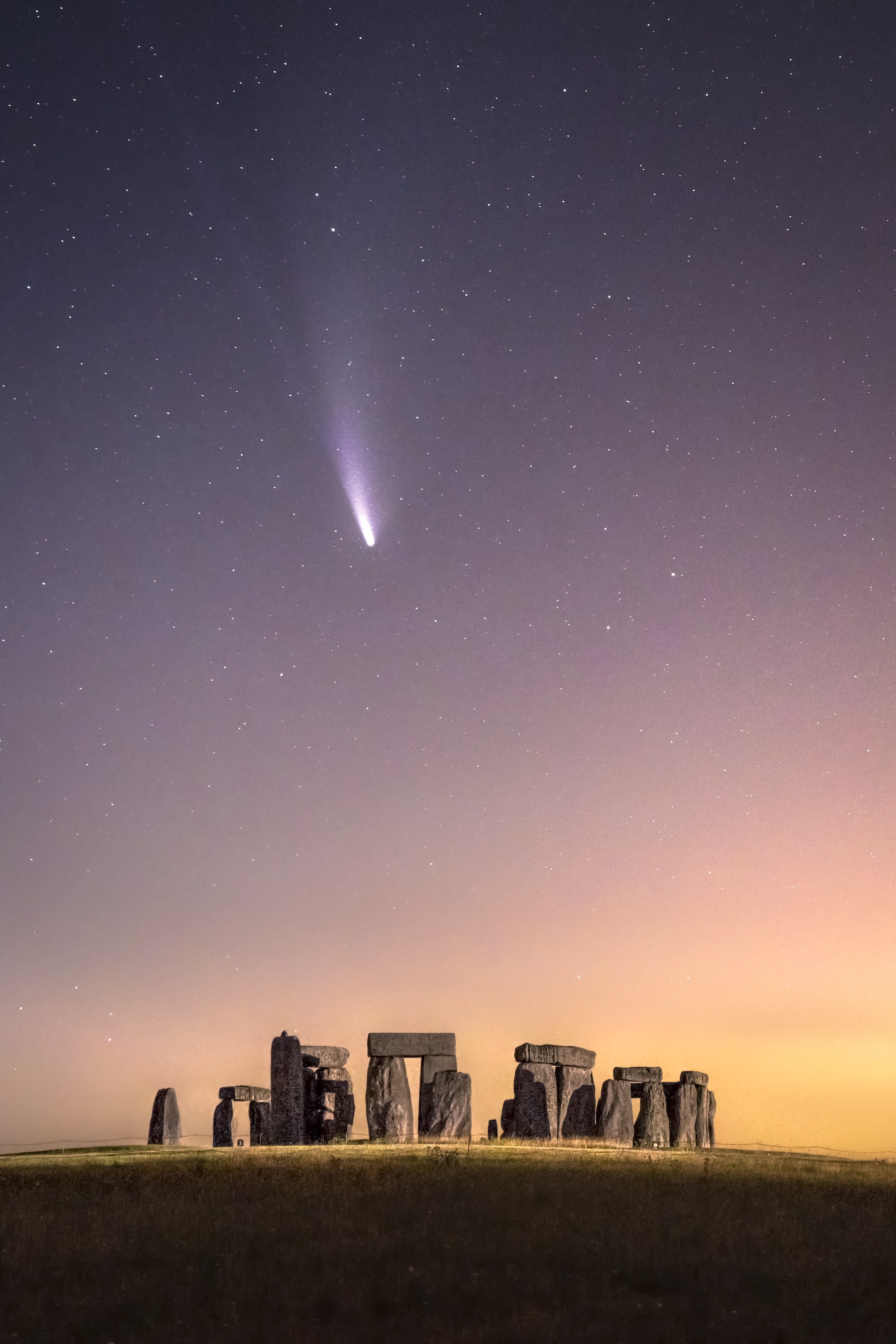
(opens in new tab)
Stonehenge didn't exist 6,800 years ago, the last time the comet NEOWISE passed by Earth. This stunning shot, captured by James Rushforth of the U.K., hints at the incredible changes our planet has seen since the astronomical phenomenon last occurred. An orange glow emanates from the villages of Durrington and Larkhill, and a passing truck's lights illuminate the stones.
(Equipment: Nikon D850 camera (opens in new tab), 70–200 mm lens at 100 mm f/2.8, ISO 5000, 4-second exposure)
Dolphin Head Nebula
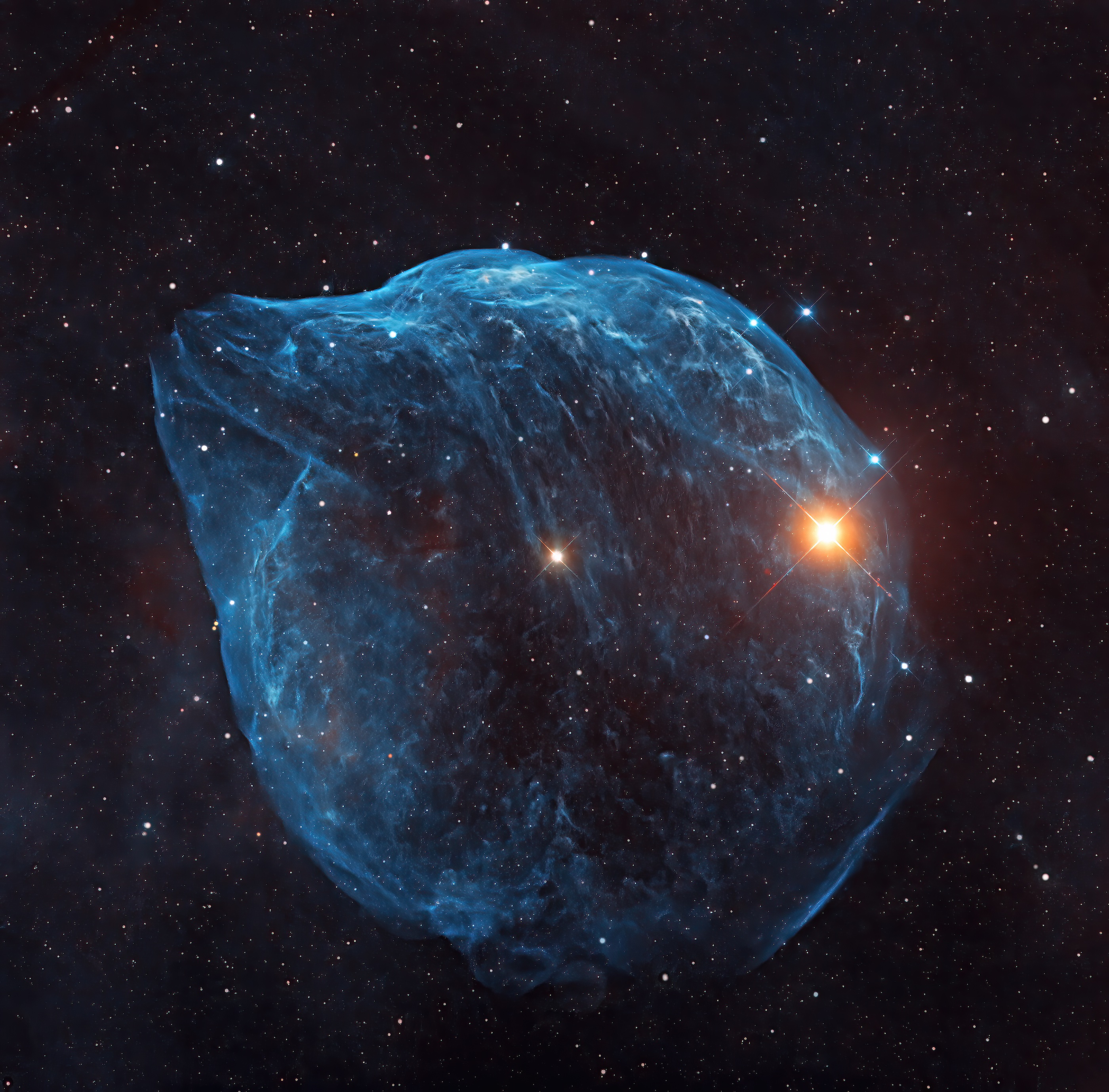
(opens in new tab)
The Dolphin Head Nebula sits in the middle of the constellation Canis Major. Yovin Yahathugoda, of Sri Lanka, captured this shot with the help of the Telescope Live remote telescope in Chile. The gorgeous result represents 90 minutes of exposure time spread over three nights of uncooperative weather.
(Yahathugoda used the ASA 500N telescope at f/3.8, Astrodon filters, ASA DDM85 Premium mount, FLI PL16803 camera, Ha-OIII composite, 1.5 hours total exposure.)
Dugi Otok - Variant A
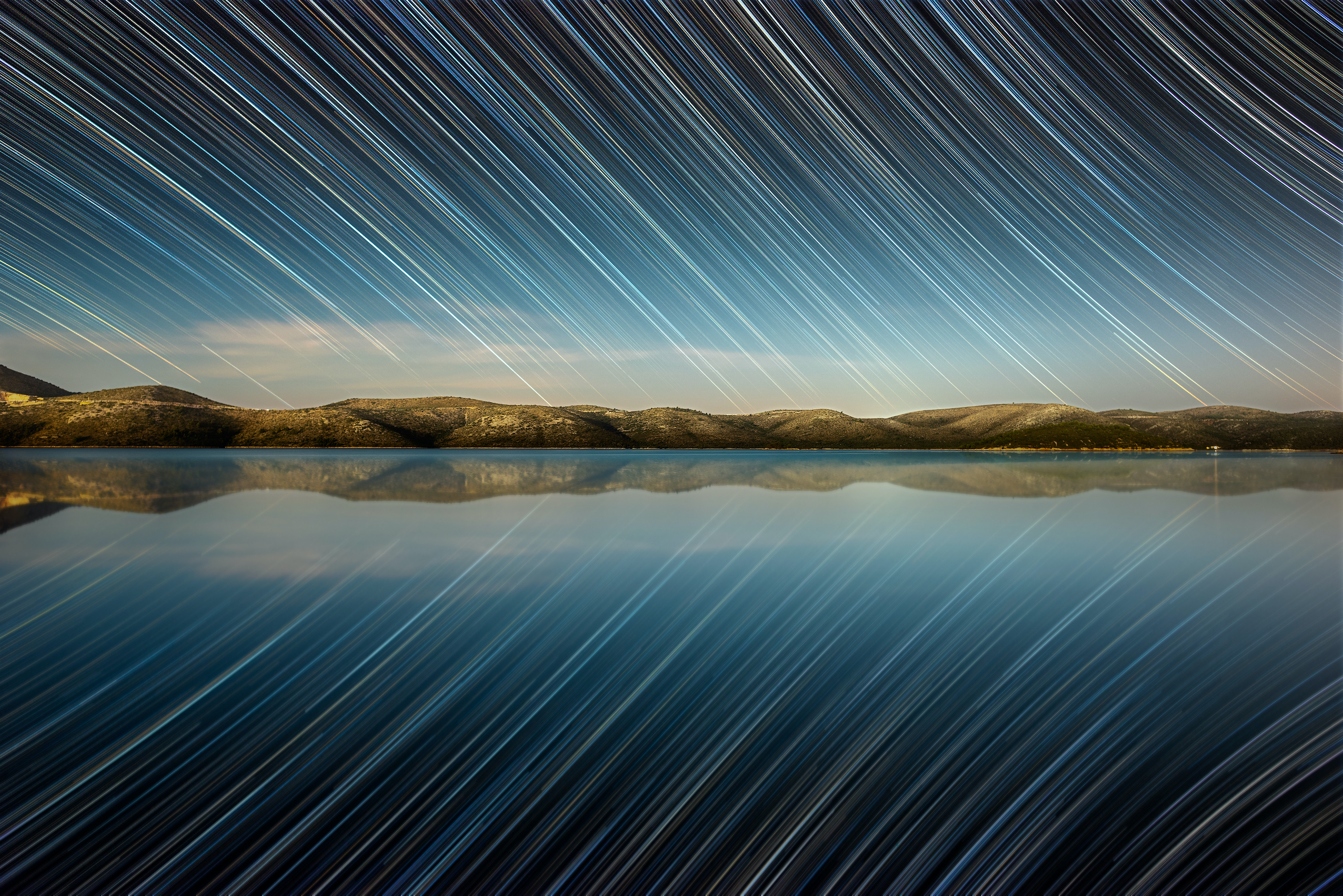
(opens in new tab)
Star trails reveal the rotation of Earth in this shot taken over Dugi Otok in Croatia. The stars reflected in the water were added in post-production because winds over the water prevented the photographer, Ivan Vucetic, from capturing the real-life reflection of the stars.
(Vucetic used a Nikon D600 camera (opens in new tab), 20 mm f/2.8 lens, ISO 1600. The foreground required a 526-second exposure, and the sky 247 x 25-seconds.)
Glory of Damavand and Milky Way
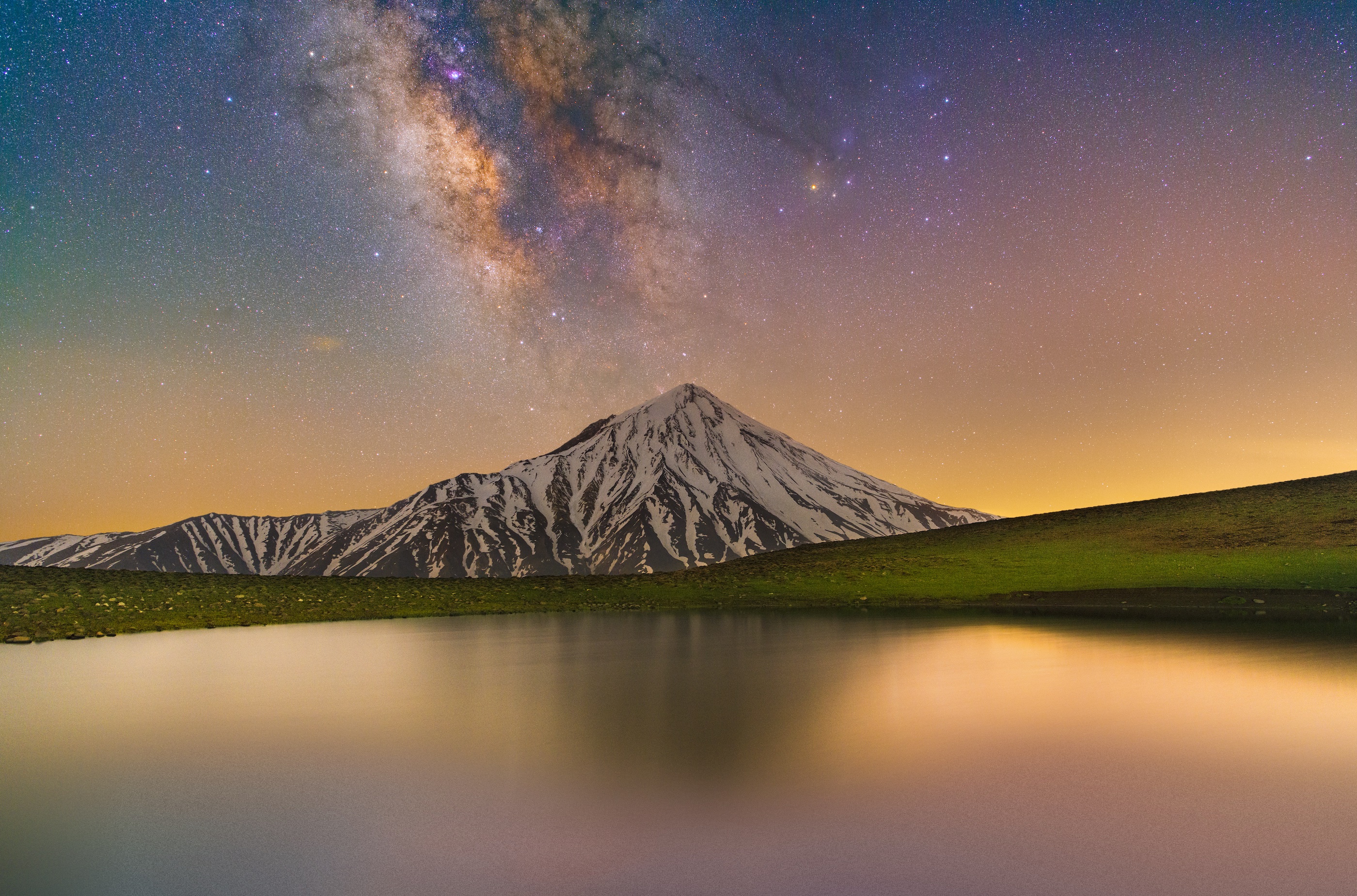
(opens in new tab)
The Milky Way shines over Mount Damavand, Iran, in this shot from May 2020. To capture this image, Masoud Ghadiri took a seven-hour hike to get into position. The photo contains 10 stacked images, five for the sky and five for the foreground.
(Ghadiri used Nikon D850 camera (opens in new tab), Vixen Polarie mount, 24 mm f/4 lens, ISO 6400, 10 x 30-second exposures.)
Harmony
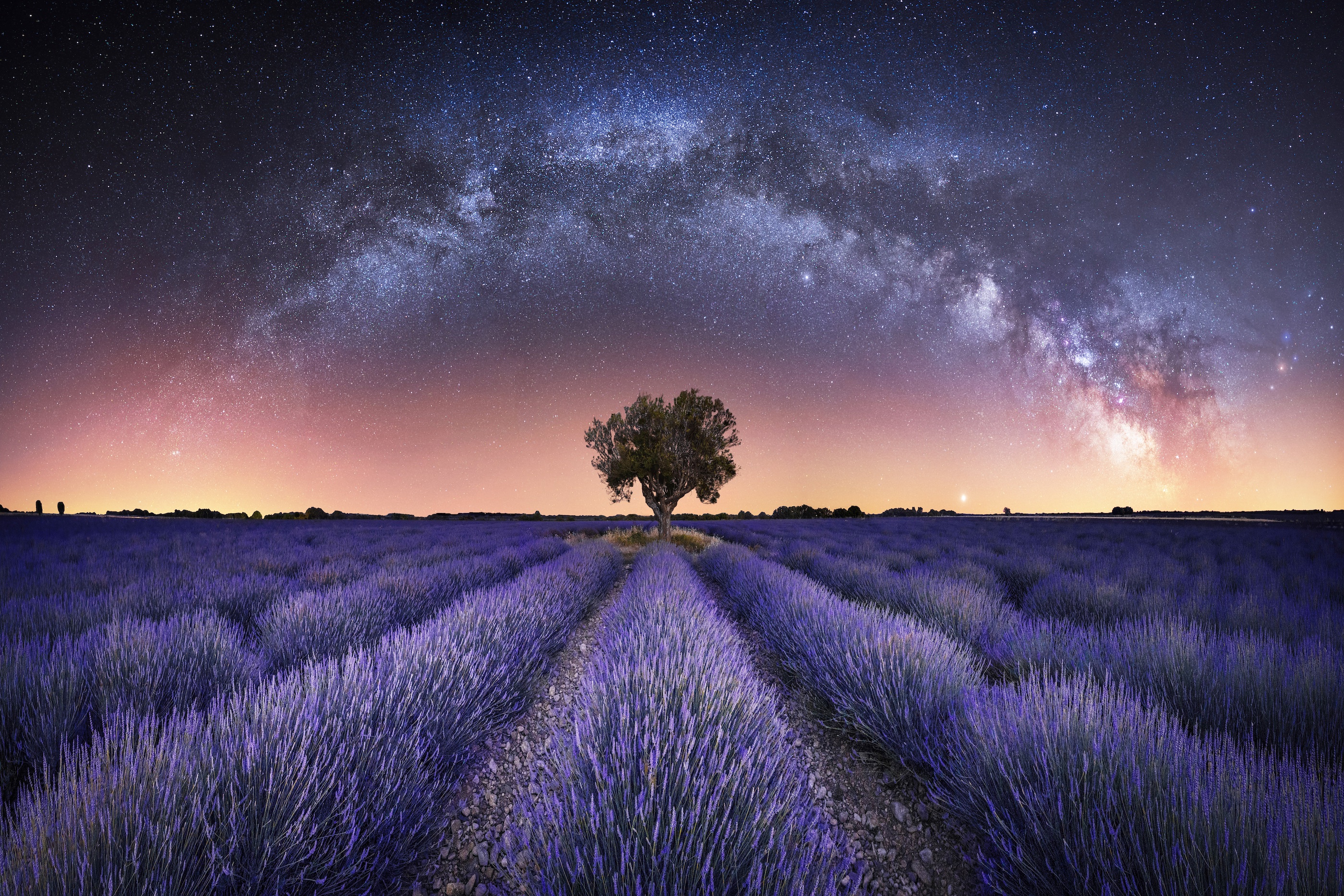
(opens in new tab)
This view of the Milky Way contrasts the stars of the galaxy with the lavender fields of Valensole, France. The photographer, Stefan Liebermann, shot the foreground and night sky separately because the lavender blowing in the breeze would otherwise look like a blur in the long exposures required to capture the Milky Way's beauty.
(Liebermann captured the shot with a Sony ILCE-7M3 camera (opens in new tab), Fornax Mounts LighTrack II mount, 16 mm f/2.8 lens. For the foreground: ISO 2500, 15 x 0.8-second exposures; and for the sky: ISO 2000, 5 x 120-second exposures.)
Iceland Vortex
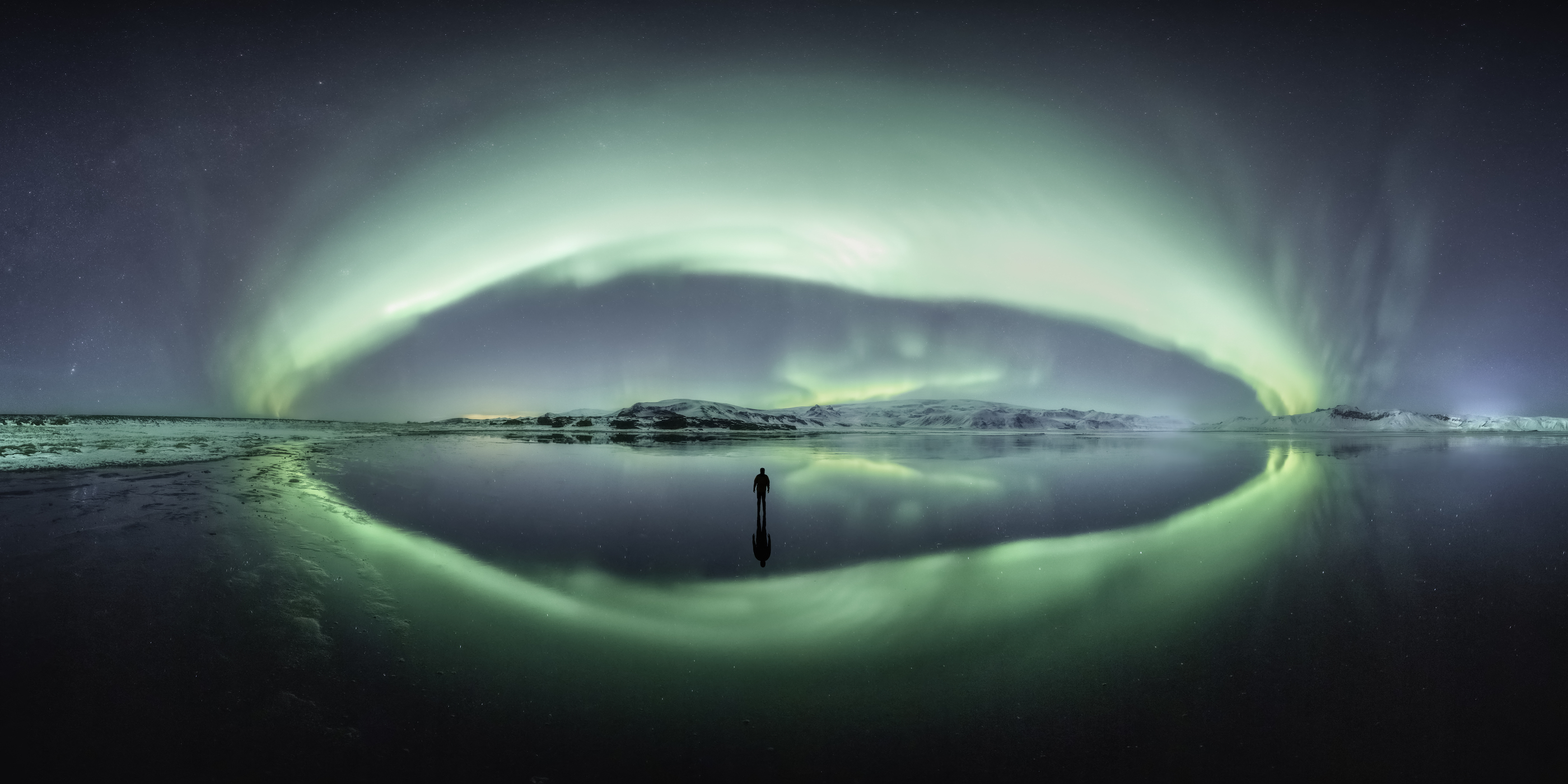
(opens in new tab)
The aurora lights up the sky near Vik, Iceland, in this shot taken in January 2020. The photographer, Larryn Rae, noted that capturing the northern lights over the powerful natural environment of Iceland in winter was an amazing experience.
(Rae used a Canon EOS 5D Mark 4 (opens in new tab) camera, 16 mm f/2.8 lens, ISO 6400, 20 x 6-second exposures.)
Luna Park
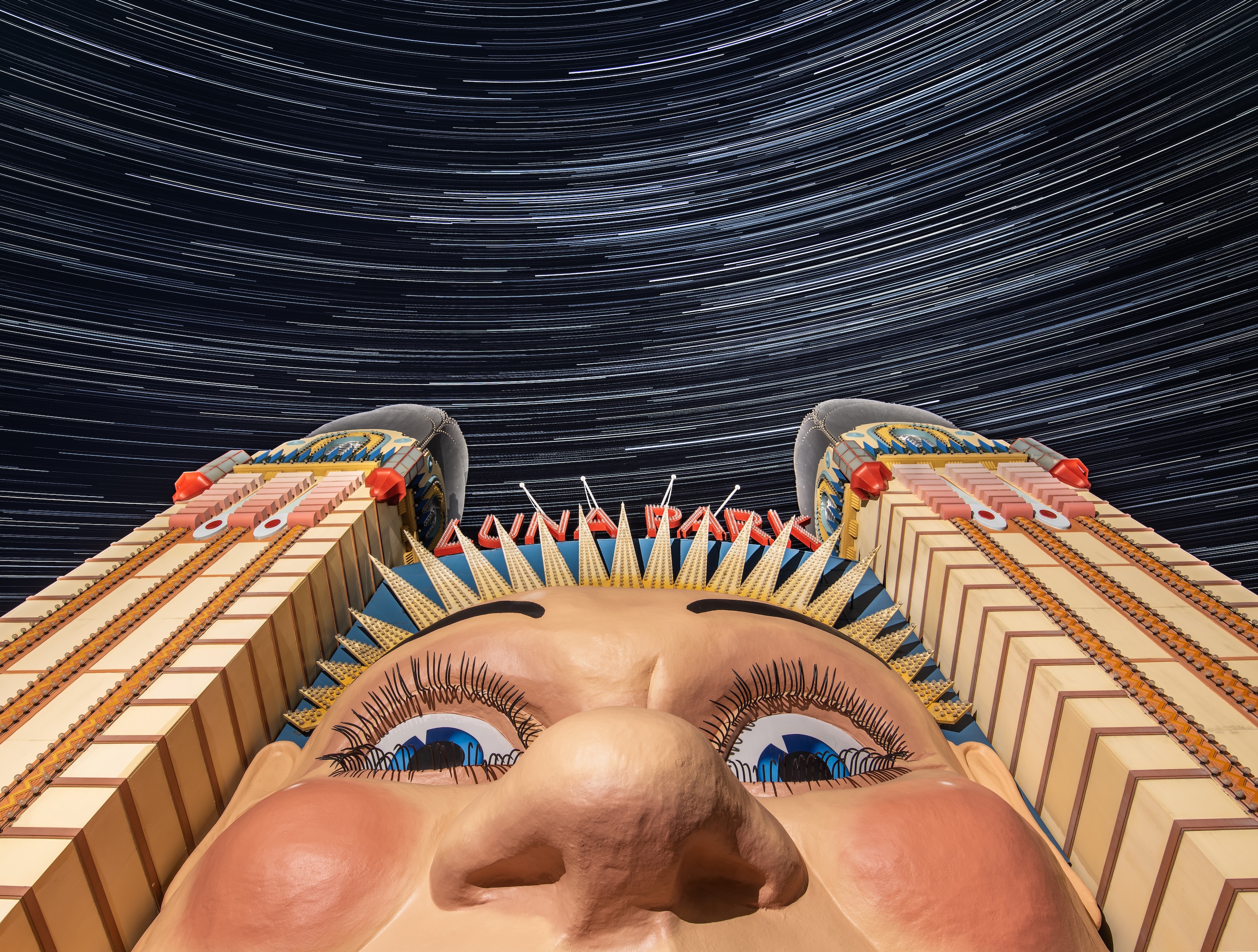
(opens in new tab)
The entrance of Luna Park, an abandoned amusement park in Sydney, Australia, is dark for just a few hours each night. That fleeting period of darkness allowed photographer Ed Hurst to capture this image of stars against the defunct human creation.
(Park used a Pentax 645Z camera (opens in new tab), 25 mm f/4 DA lens. For the foreground: ISO 100, 60-second exposure at f/13; for the sky: ISO 1250, 3,004 x 1.6 second exposures at f/5.)
Martian Sunset

(opens in new tab)
The sun sets on Mars in this shot made from images taken by the Curiosity Rover in 2015. The sun looks slightly smaller than it does on Earth, given Mars' greater distance from our nearest star. The photo is credited to John White.
Milky Way rising over Durdle Door
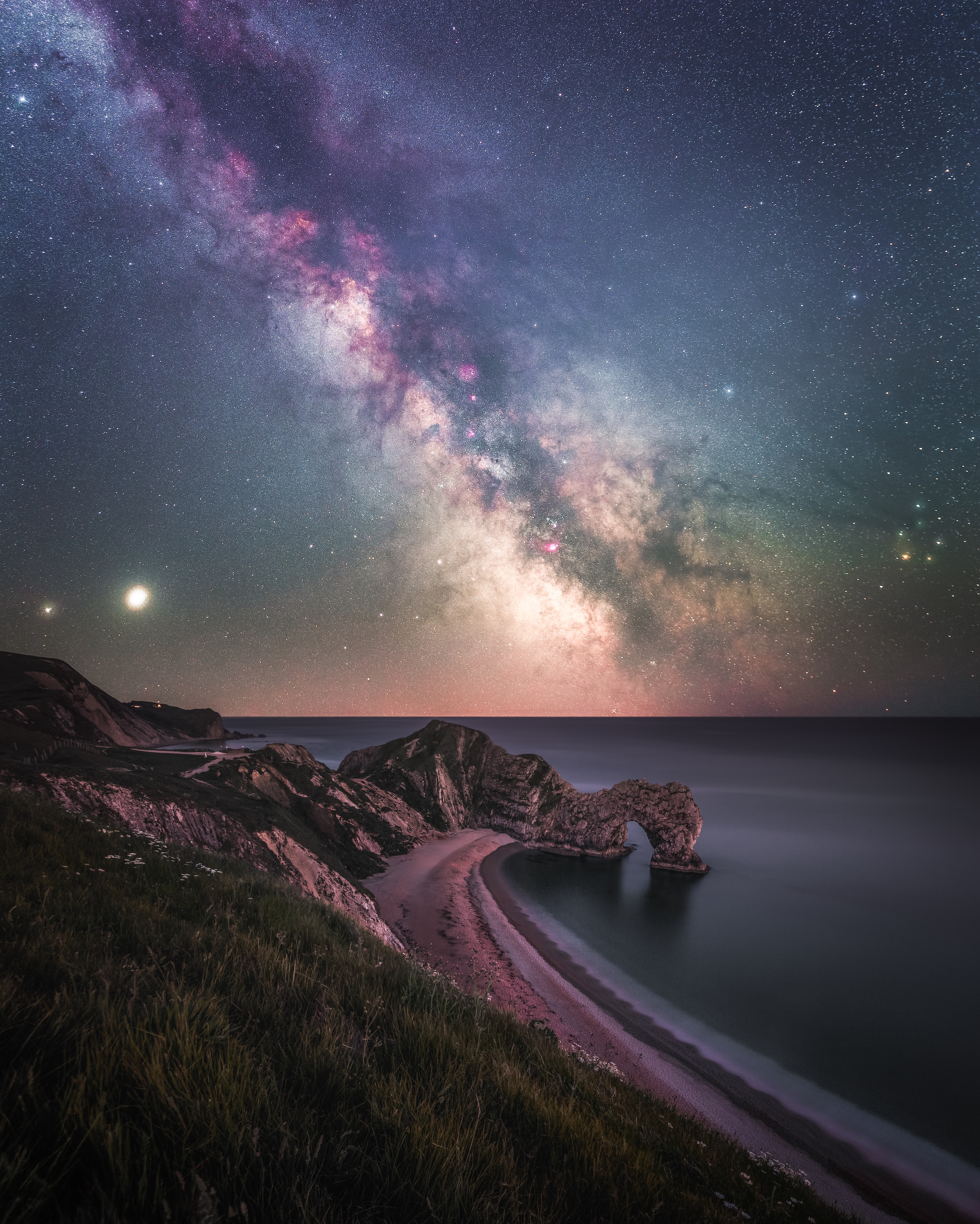
(opens in new tab)
Durdle Door, a coastal rock formation in Dorset, England, foregrounds the Milky Way in this shot taken in May 2020 by Anthony Sullivan. Saturn and Jupiter are visible above the horizon on the left side of the frame.
(Sullivan captured the images with a Canon 6D camera (opens in new tab). For the foreground: 20 mm f/8 lens, ISO 100, 244-second exposure. And for the sky: 20 mm f/4 lens, ISO 1600, 4 x 240-second exposures.)
Moonrise over Jodrell Bank
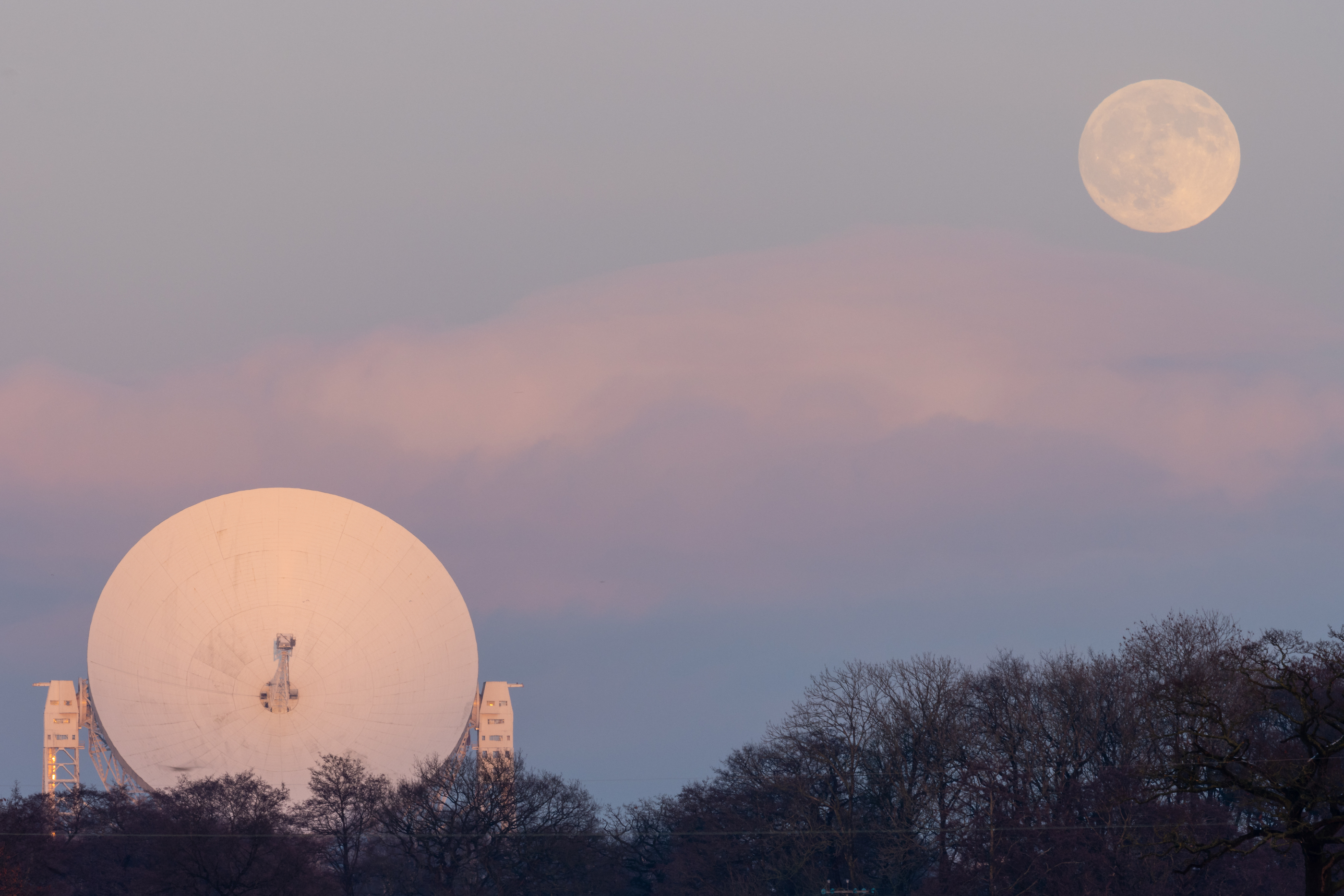
(opens in new tab)
The setting sun lights up the clouds as the moon appears over the Lovell Telescope in northwest England. Matt Naylor snapped the image from Holmes Chapel on Dec. 29, 2020.
(Naylor used a Canon EOS 90D camera (opens in new tab), Canon EF 100–400 mm lens at 286 mm f/14, ISO 100, 1/15-second exposure.)
NGC 2024 – Flame Nebula
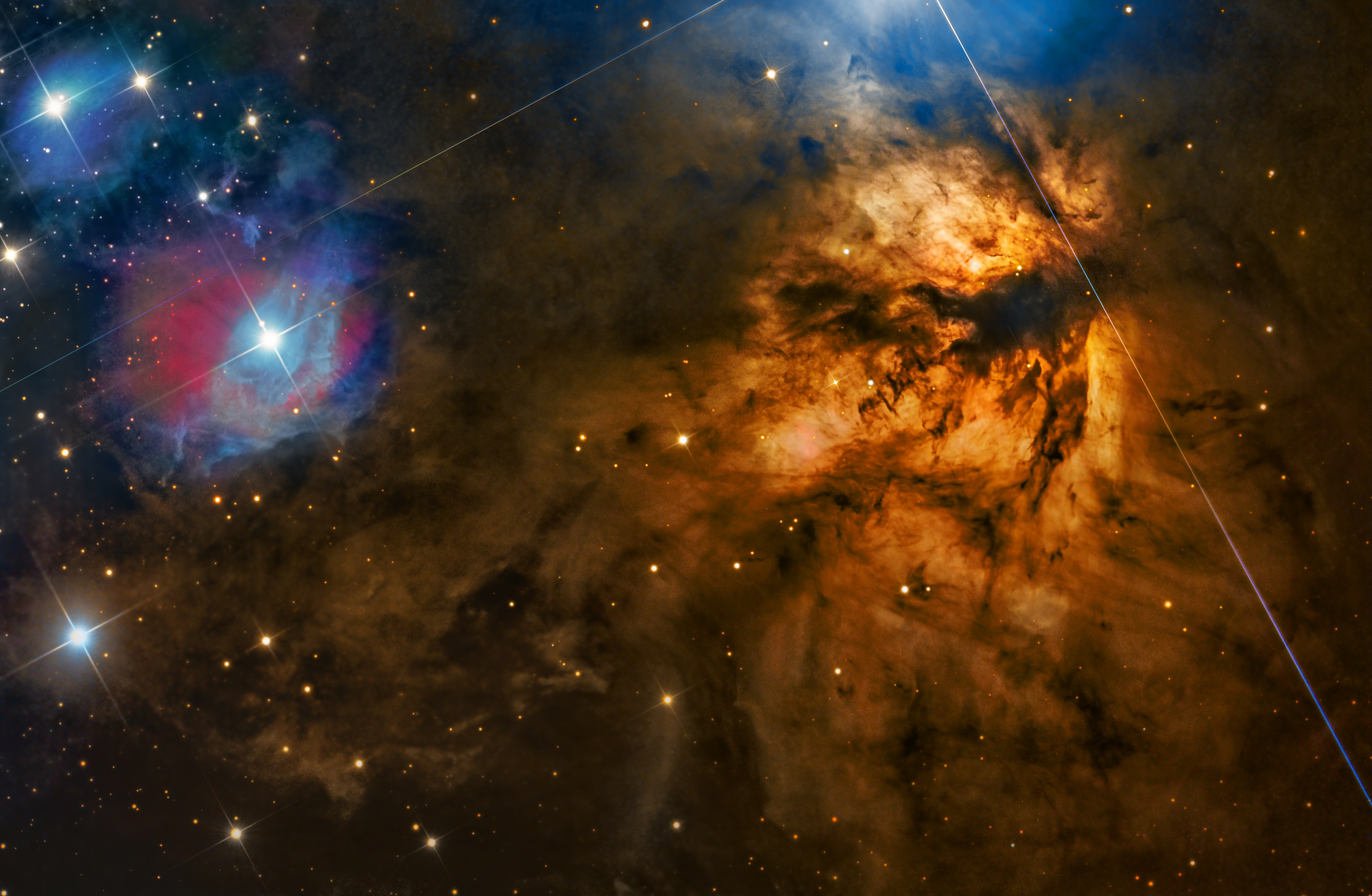
(opens in new tab)
The Flame Nebula sits in the constellation Orion, between 900 and 1,500 light-years away from Earth. Steven Mohr took this composite image from Australia between November and December 2020.
(Mohr used a planewave CDK 12.5" telescope at f/8, Astrodon and Baader filters, AP900GTO mount, SBIG STXL-1100 + AOX camera, L-RGB-Ha composite, 23 hours total exposure.)
NGC 3981
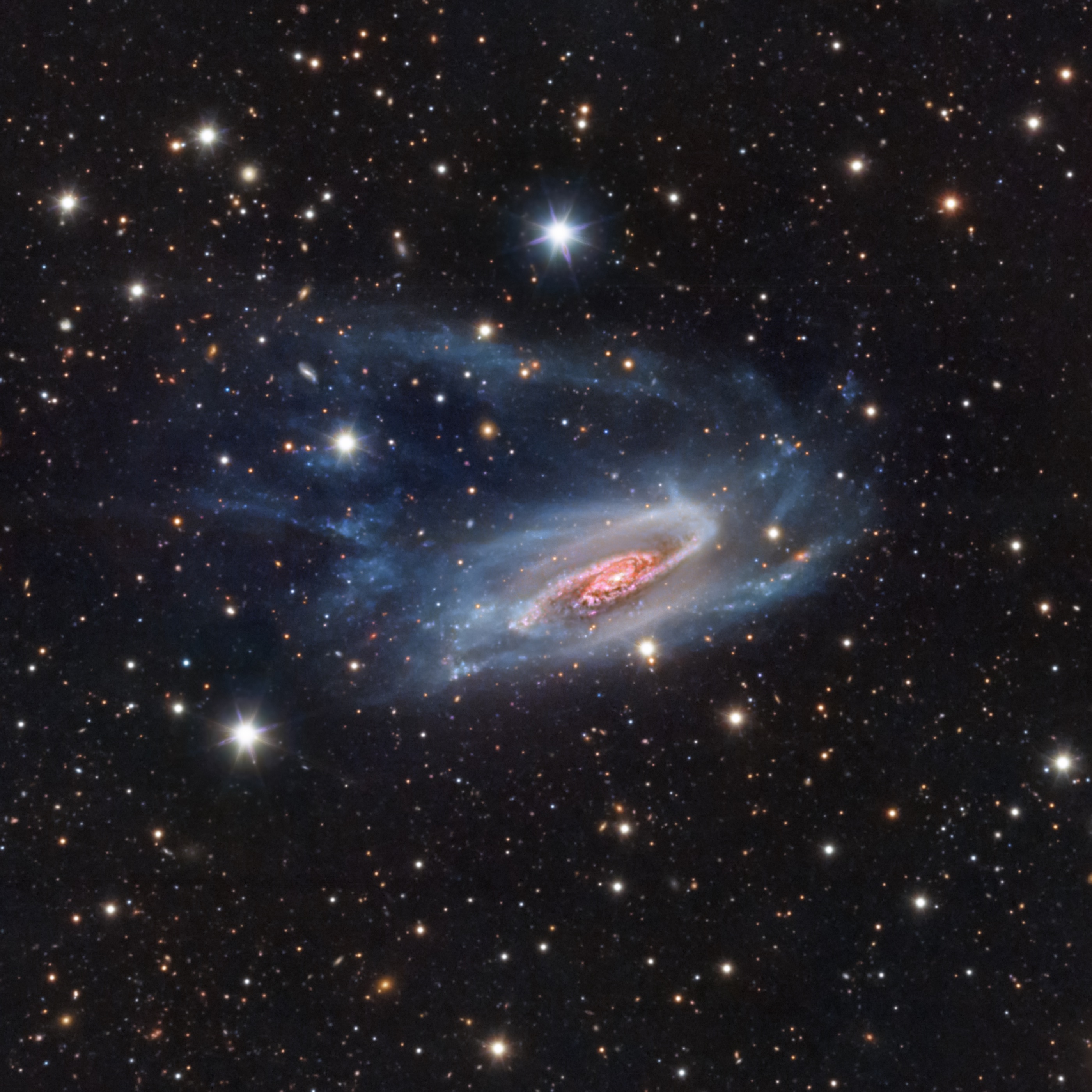
(opens in new tab)
NGC 3981 is a galaxy 65 million light-years away in the constellation Crater. Here, its interaction with a nearby galaxy is clear — the outer arms are being muddled and swept away by the gravity acting between the two objects.
(Photographer Bernard Miller used an ASA RC-1000AZ telescope at f/6.8, Astrodon filters, ASA Alt-Azimuth Direct Drive Mount, FLI PL16803 camera, L-RGB composite, 34 hours total exposure.)
NGC 6188 SHOrgb by Cielaustral team
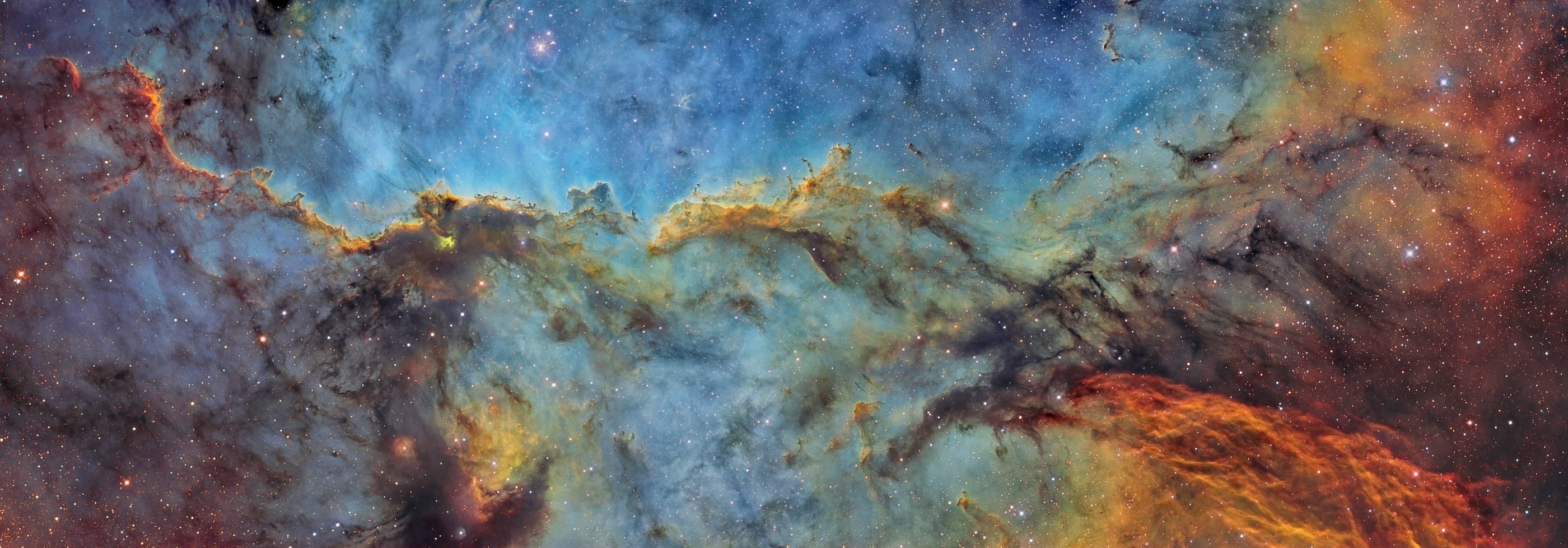
(opens in new tab)
NGC 6188 is a stunning nebula found within the constellation Ara, some 4,000 light-years from Earth. The Cielaustral team stitched together a mosaic of images taken over more than 250 hours to create this image of the gaseous region of space. The team of photographers included Jean-Claude Canonne, Didier Chaplain, Georges Chassaigne, Philippe Bernhard, Laurent Bourgon and Nicolas Outters.
(The image was captured with a CDK 20" homemade telescope at f/6.8, Paramount ME2 mount, Moravian G4 16803 camera, RGB-Ha-SII-OIII composite, 253 hours total exposure.)
NGC 6723, NGC 6726, NGC 6727 and NGC 6729 - Dark Molecular Cloud in Corona Australis
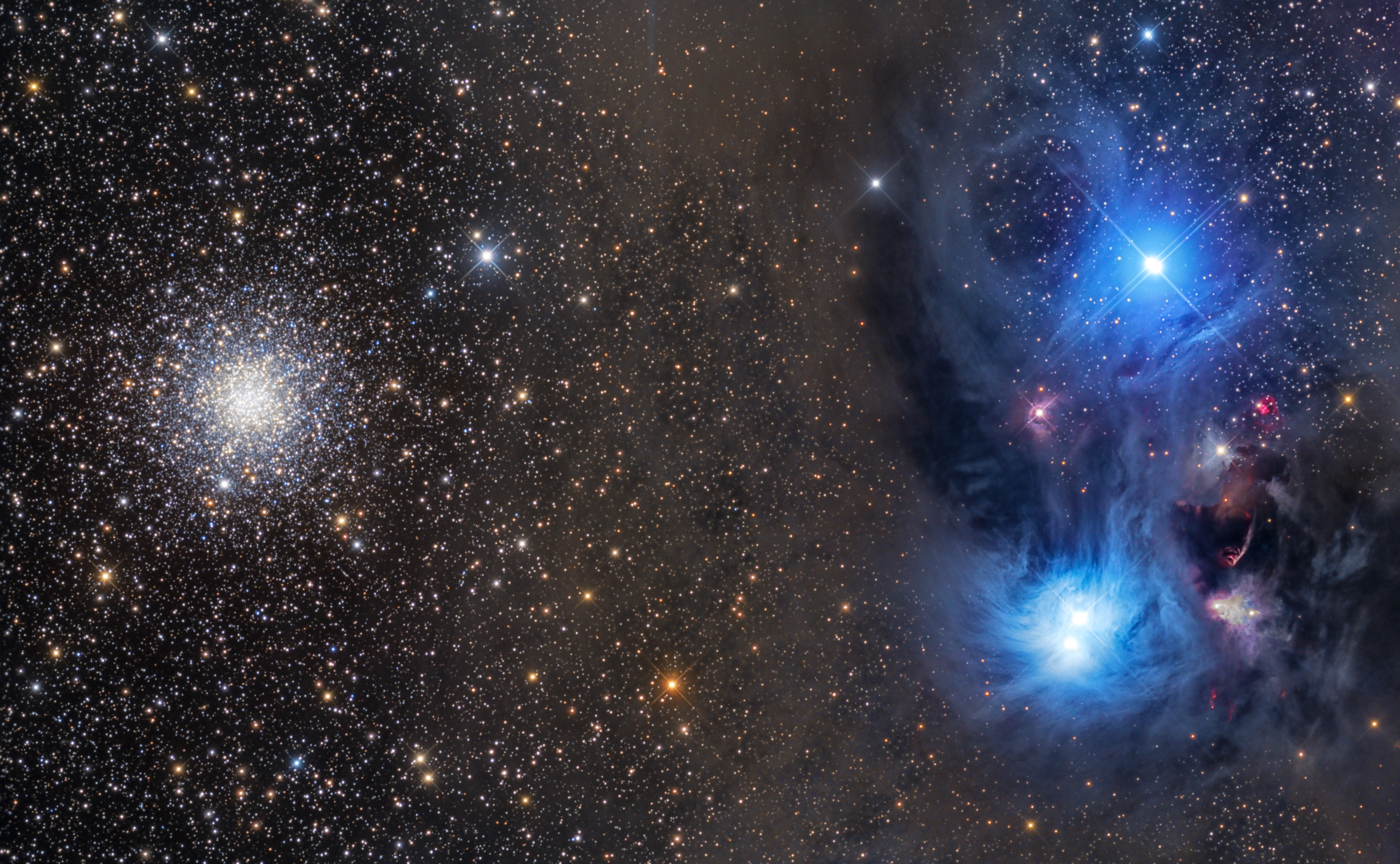
(opens in new tab)
This is a full-moon-size slice of the Dark Molecular Cloud found within Corona Australis, a constellation 554 light-years away. Within this cloud, new stars are born. On the left is NGC 6723, a globular cluster that sits a stunning 28,400 light-years away.
(Photographer Steven Mohr used a planewave CDK 12.5" telescope at f/8, Astrodon and Baader filters, AP900GTO mount, SBIG STXL-11000 + AOX camera, L-RGB-Ha composite, 82.58 hours total exposure.)
Path of the Full Moon above the Sleeping City
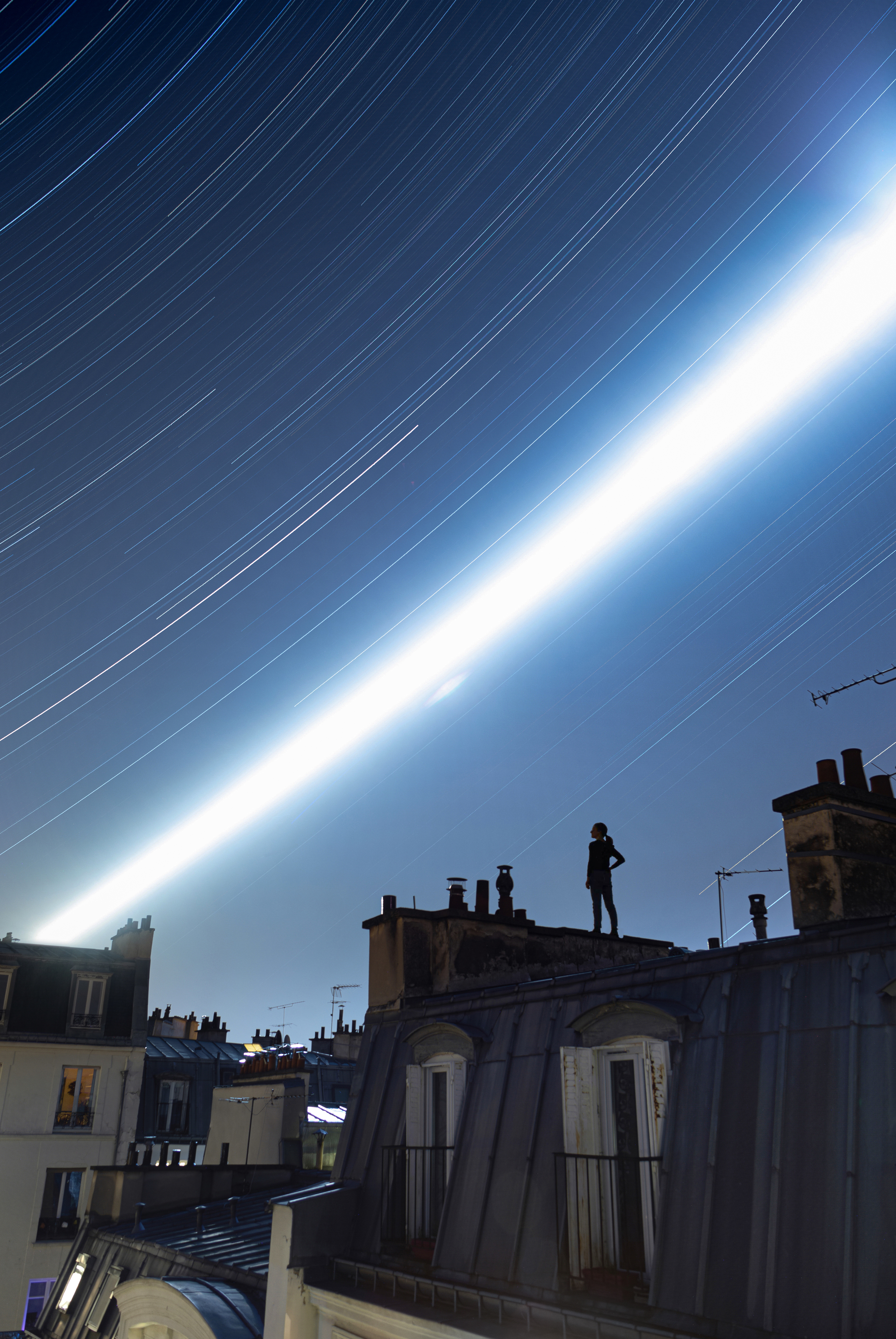
(opens in new tab)
The moon travels over Paris in this photograph, which was taken from the flat of photographer Rémi Leblanc-Messager in the central part of the city during a period of pandemic curfew in February 2021.
(The photographer used a Canon EOS 6D camera (opens in new tab), 28 mm f/6.3 lens, ISO 200, 1,080 x 15-second exposures.)
Pleiades Sisters
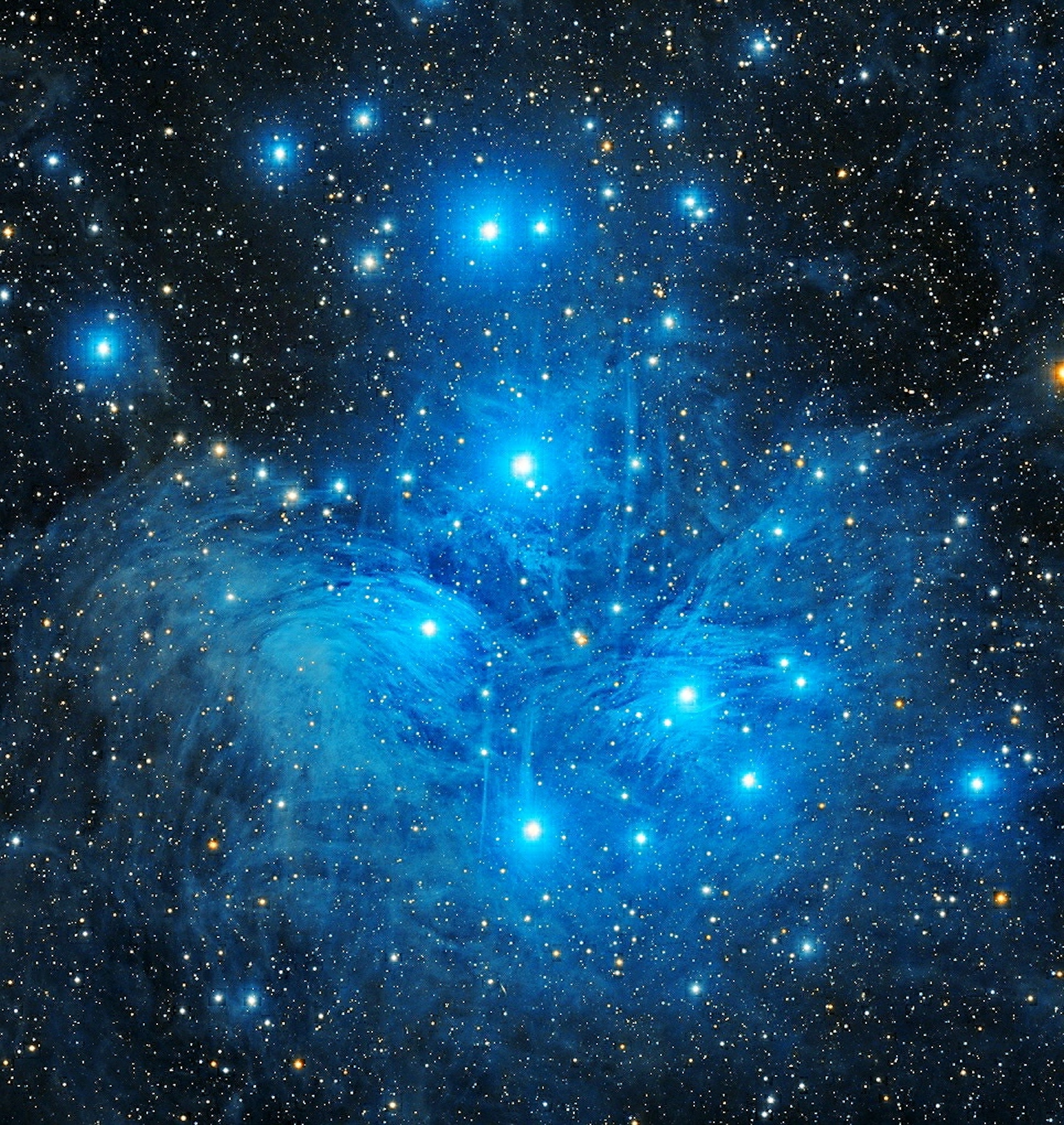
(opens in new tab)
Fourteen-year-old Jashanpreet Singh Dingra took this image of the Pleiades star cluster over Punjab, India, in December 2020.
(Equipment: Takahashi FSQ-85ED telescope at 450 mm f/5.3, Astrodon filters, Avalon M-Uno mount, QSI 660WSG-8 camera, L-RGB-Ha composite, 3 hours 3 minutes total exposure)
Proximity
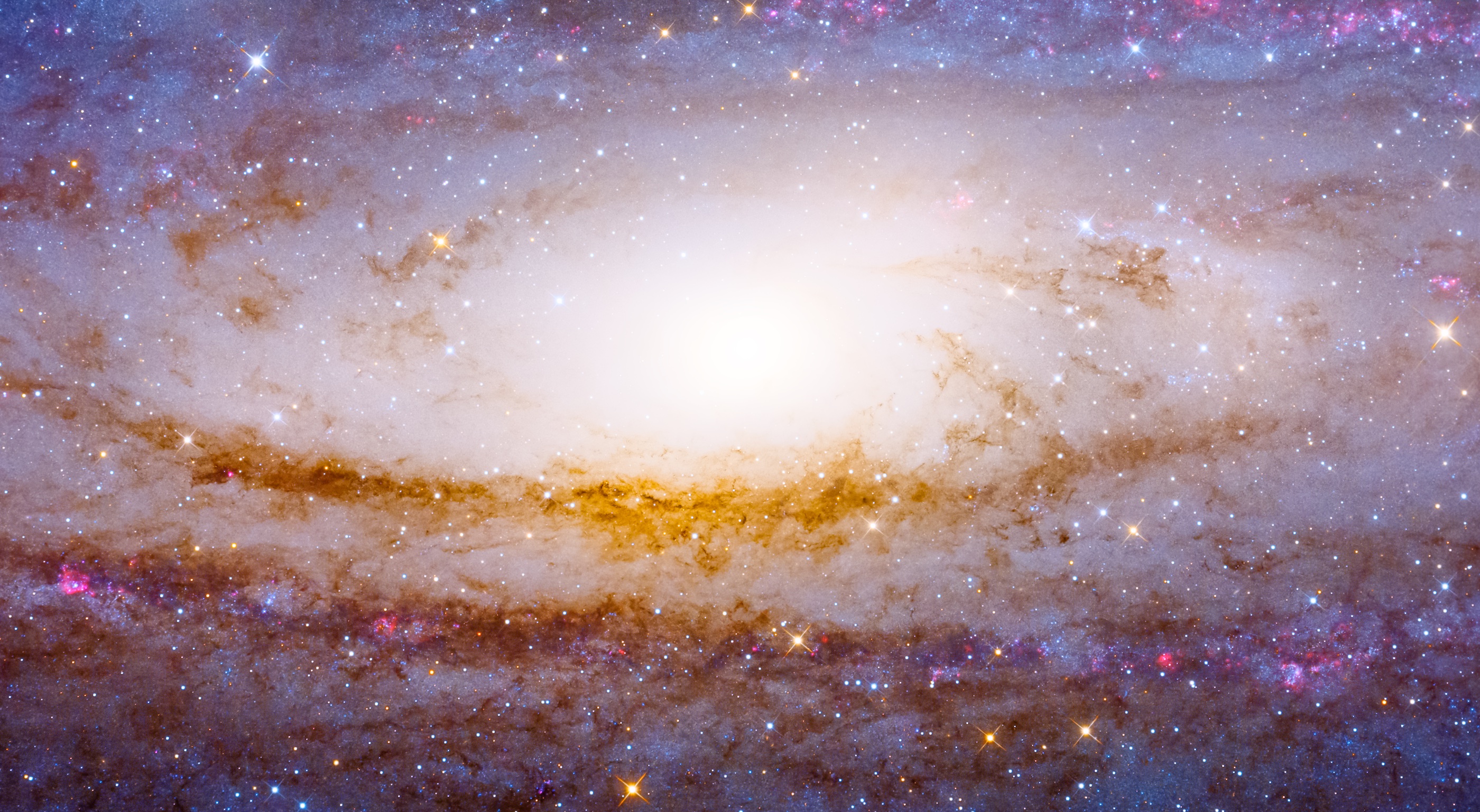
(opens in new tab)
The Andromeda galaxy fills this image, taken by Hungarian photographer Péter Feltóti in several exposures between October 2017 and January 2021.
(Equipment: SkyWatcher 200/800 Newton Astrograph telescope at f/4, Astronomik filters, SkyWatcher NEQ6 Pro mount, ZWO ASI183MM Pro, Moravian Instruments G3 16200 Mk II and Canon EOS 600D cameras, L-RGB-Ha composite, 14.1 hours total exposure)
Saturn at its Best
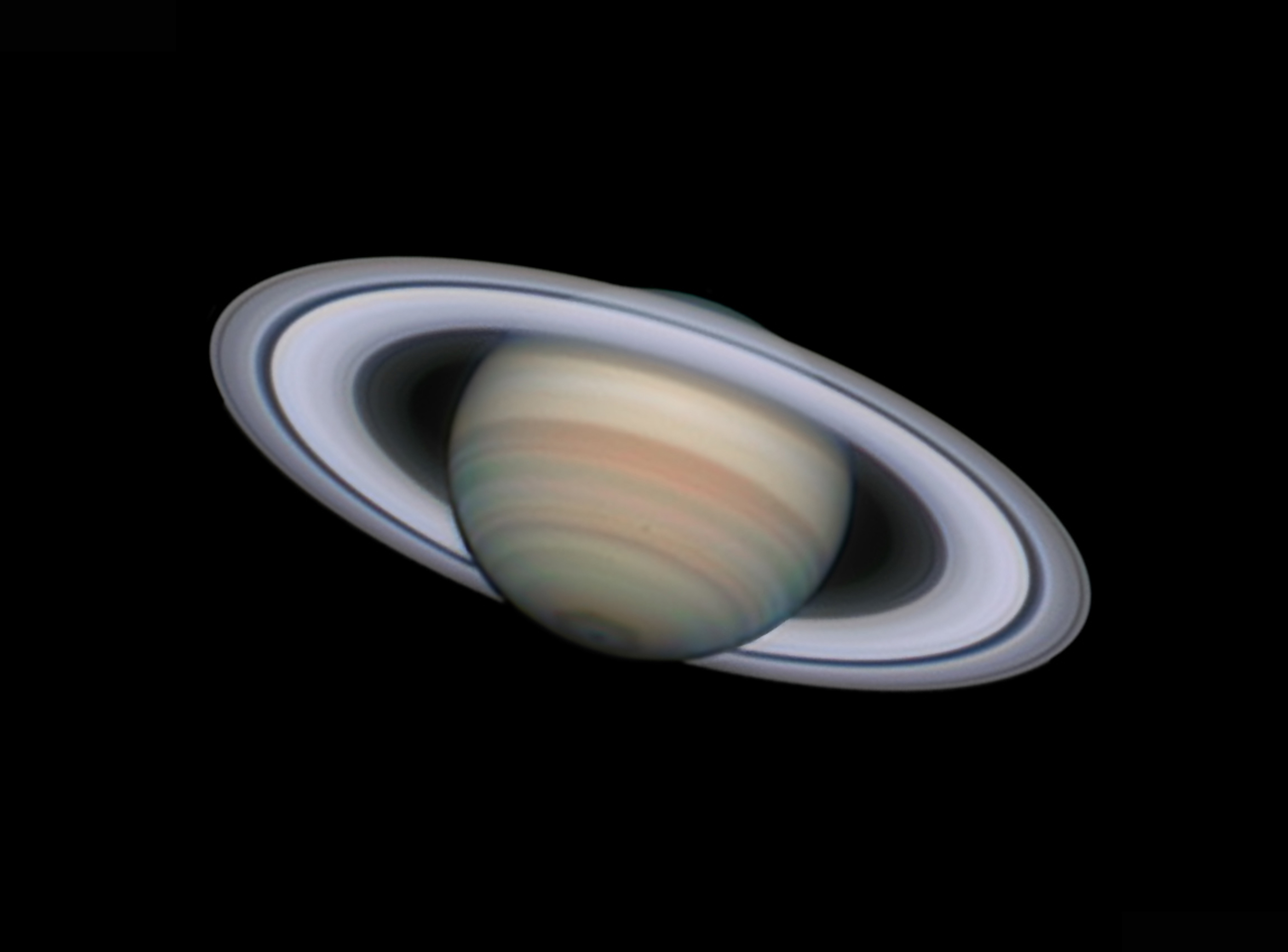
(opens in new tab)
The details of Saturn's rings stand out in startling beauty in this photograph taken by Damian Peach from Spain in July 2020. The planet's polar hexagon, a persistent cloud pattern, is seen near the pole.
(Equipment: ASA 500 mm Cassegrain telescope, SkyWatcher EQ-8 mount, ZWO ASI290MM camera, c.100,000 x 0.03-second exposures)
Star Fall
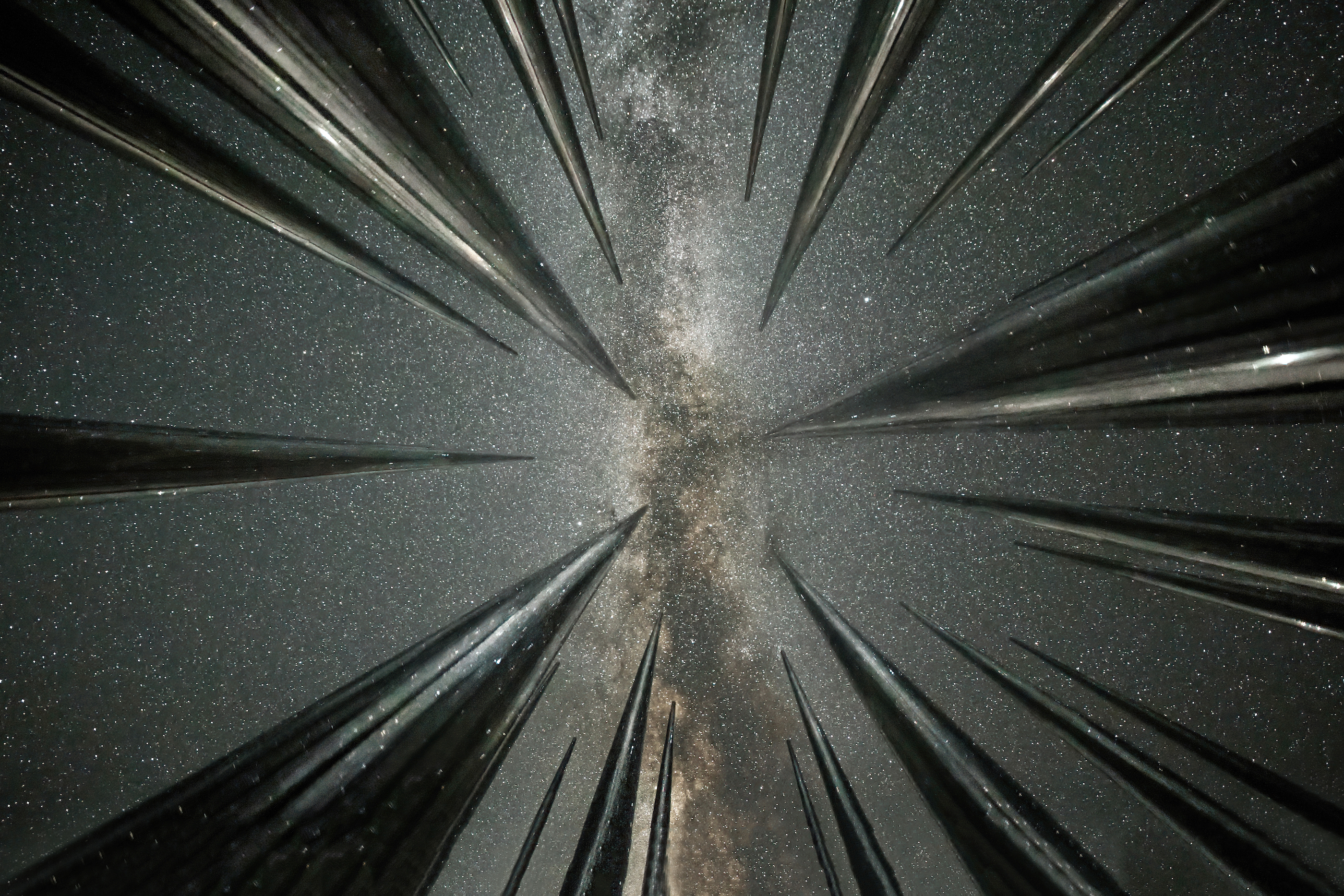
(opens in new tab)
Sculptures in the Tengger Desert near Wuwei, China, reflect the light of the Milky way in this shot taken in August 2020 by photographer Wang Zheng. The metal columns that point skyward are called raindrops. To capture the image, Zheng placed the camera at a low spot in the center of the sculpture.
Star trails over the Lujiazui City Skyline
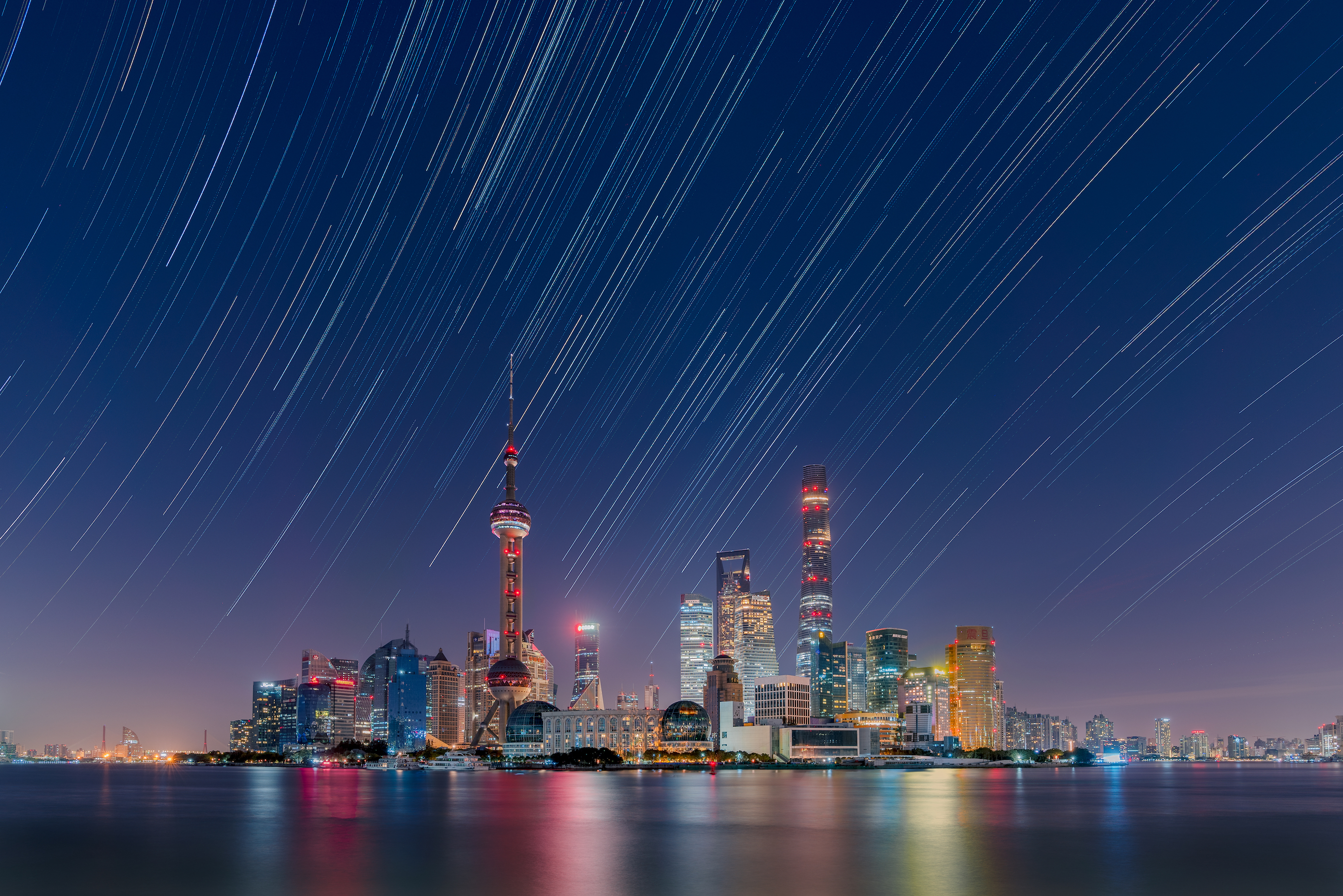
(opens in new tab)
Stars trail across the sky over Lujiazui city in Shanghai's Pudong district. Light pollution makes this a difficult place to shoot, but a clear autumn night allowed the photographer Daning Kai to capture this reminder of the night sky above urban areas.
(Equipment: Sony ILCE-7RM3 camera (opens in new tab), 16 mm f/5.6 lens, ISO 100, 305 x 15-second exposures)
Star Watcher
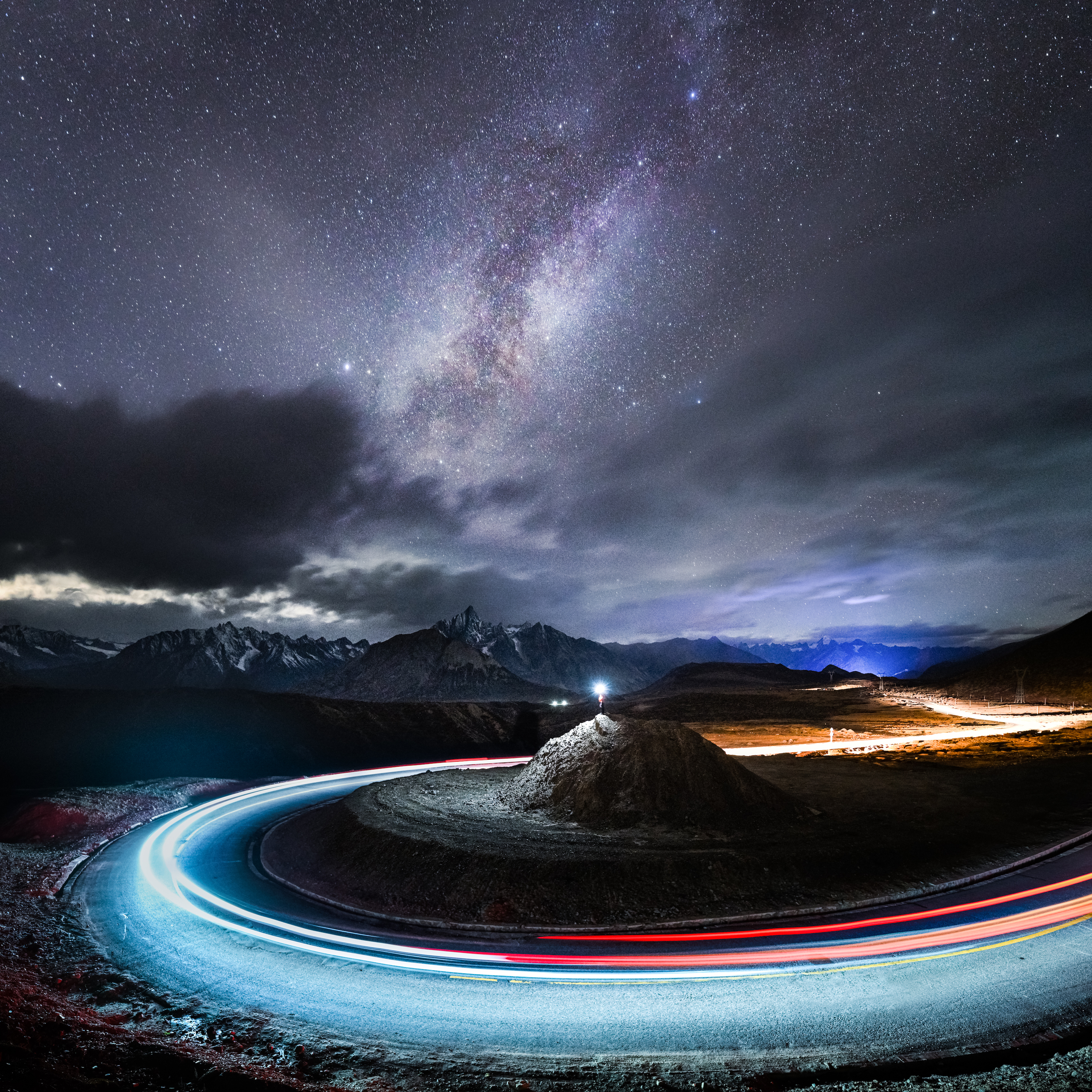
(opens in new tab)
Photographer Yang Sutie was driving on a mountain road in Tibet late one night when he noticed the Milky Way and the mountains lining up for the perfect shot. He set his camera to shoot automatically and climbed up the hillside to get into the frame himself.
(Equipment: Nikon Z 7II camera (opens in new tab), 17 mm f/2.8 lens; car lights and figure: ISO 1000, 2 x 25-second exposures; sky and mountains: ISO 6400, 25-second exposure.)
Sunrise of the Magic City
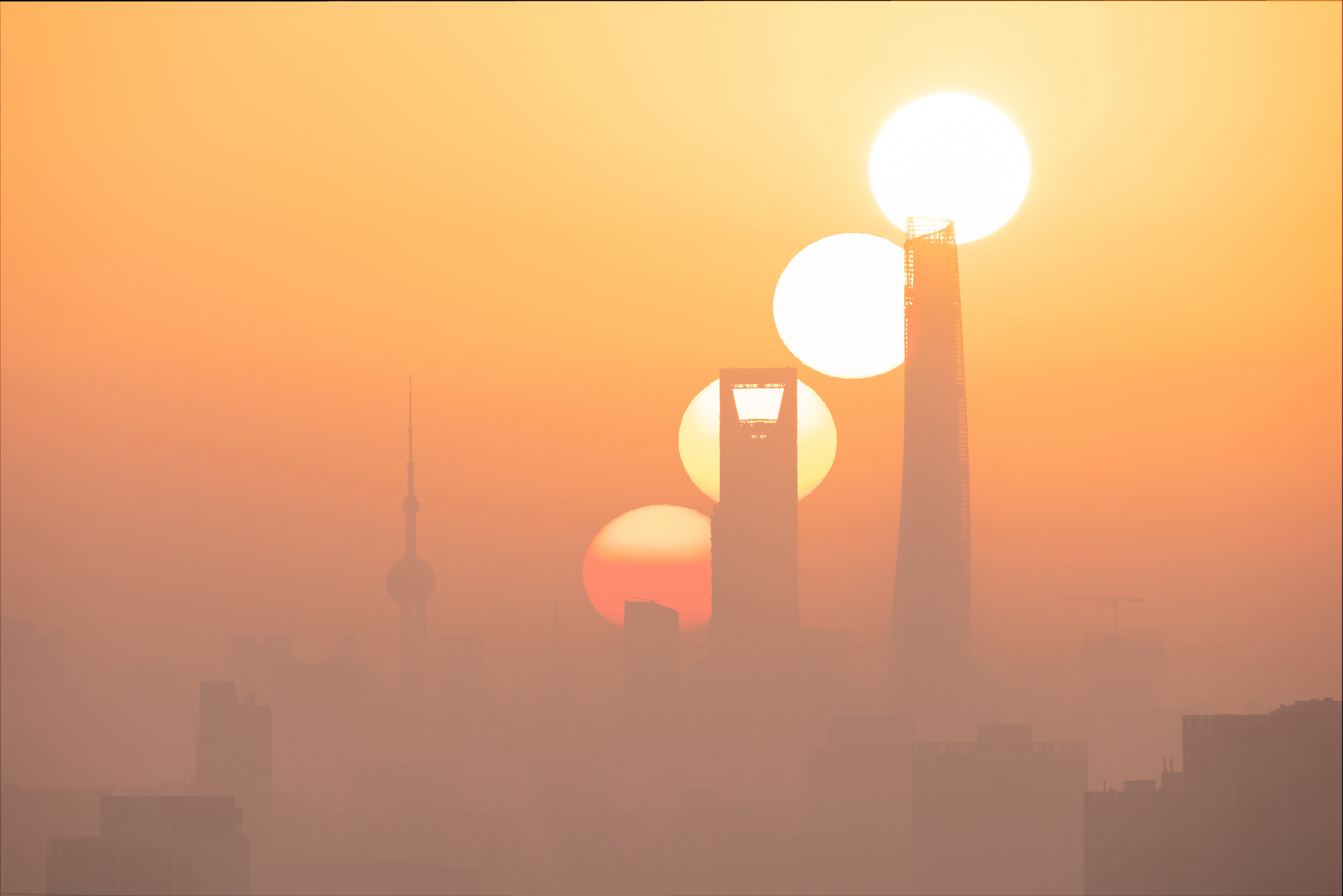
(opens in new tab)
Just a few minutes from the Lujiazui financial district in Shanghai, sunrise takes on a particular beauty. The photographer Jiajun Hua took four exposures from the same perspective to capture this image.
(Equipment: Sony ILCE-7RM3 camera (opens in new tab), 403 mm f/9 lens, ISO 320, 4 x 1/320-second exposures)
Sunspot Looking out into Space
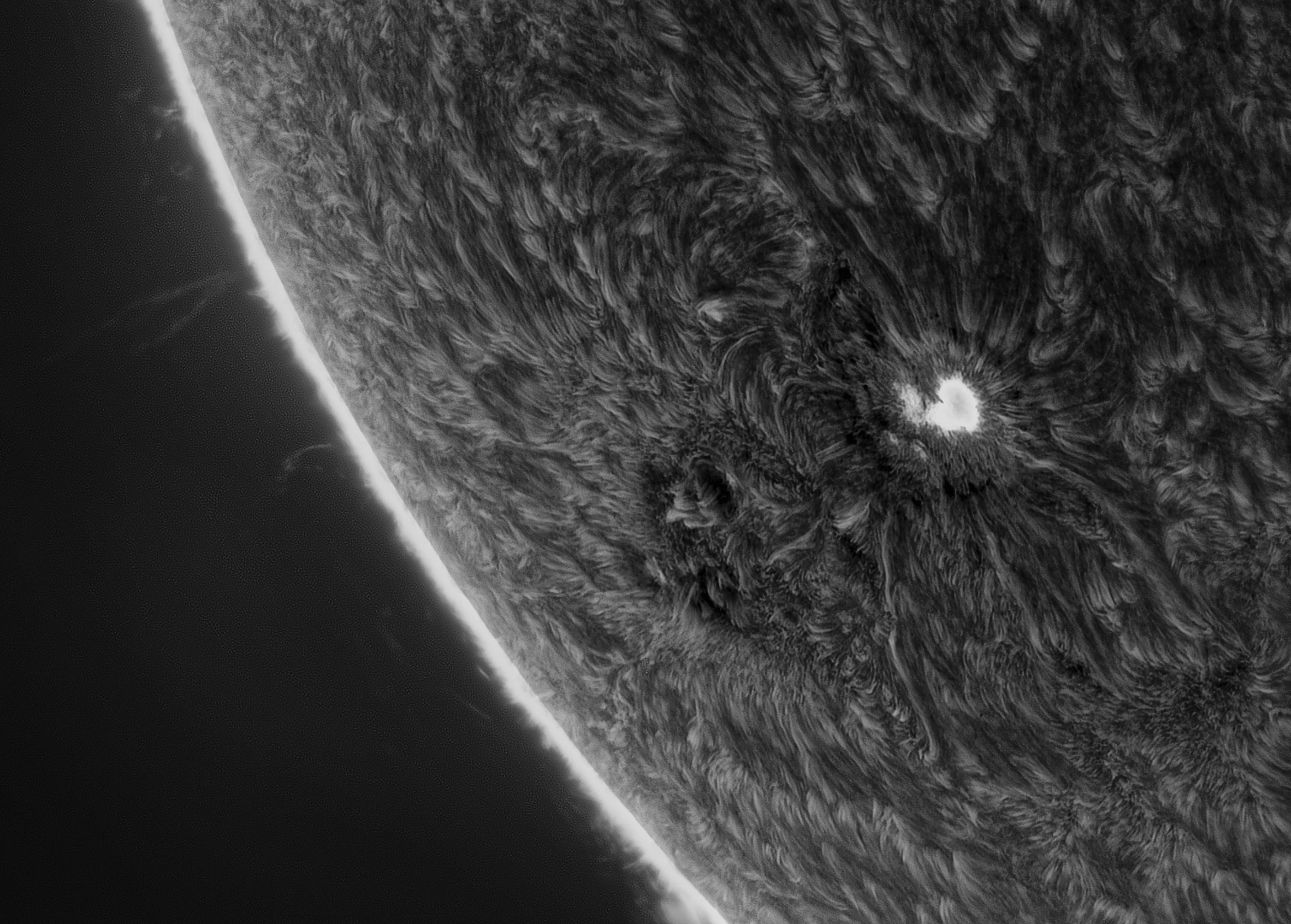
(opens in new tab)
A sunspot flickers in this image of the sun's chromosphere, part of the outer atmosphere of the star at the center of our solar system. Photographer Siu Fone Tang stacked several images together and enhanced them in Photoshop to show the contrast in this restless layer of the sun.
(Equipment: SkyWatcher Esprit 150 telescope at f/7, DayStar Quark Gemini lens, SkyWatcher EQ8Rh-Pro mount, ZWO ASI174MM camera, 2,000 x 16-millisecond exposures)
The Cave
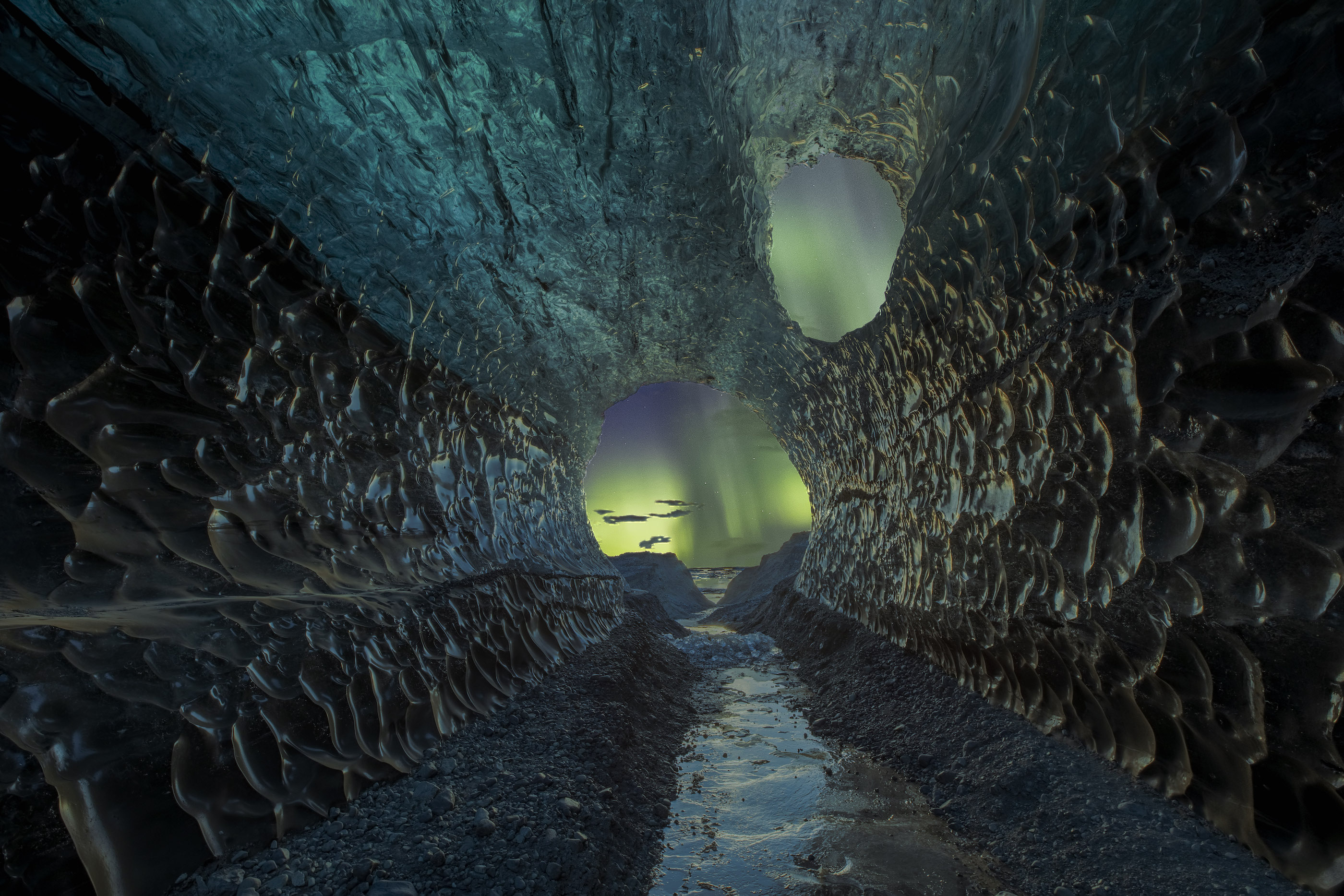
(opens in new tab)
Dark and light contrast in this shot of the aurora borealis seen from a cave, which was taken by Markus van Hauten in January near Breidamerkurjökull, Iceland.
(Equipment: Canon EOS 5D Mark IV camera (opens in new tab), 16 mm f/4 lens; foreground: ISO 100, 1/-800-second exposure; sky: ISO 800, 20-second exposure.)
The Exceptionally Active Ion Tail of Comet 2020F8 SWAN
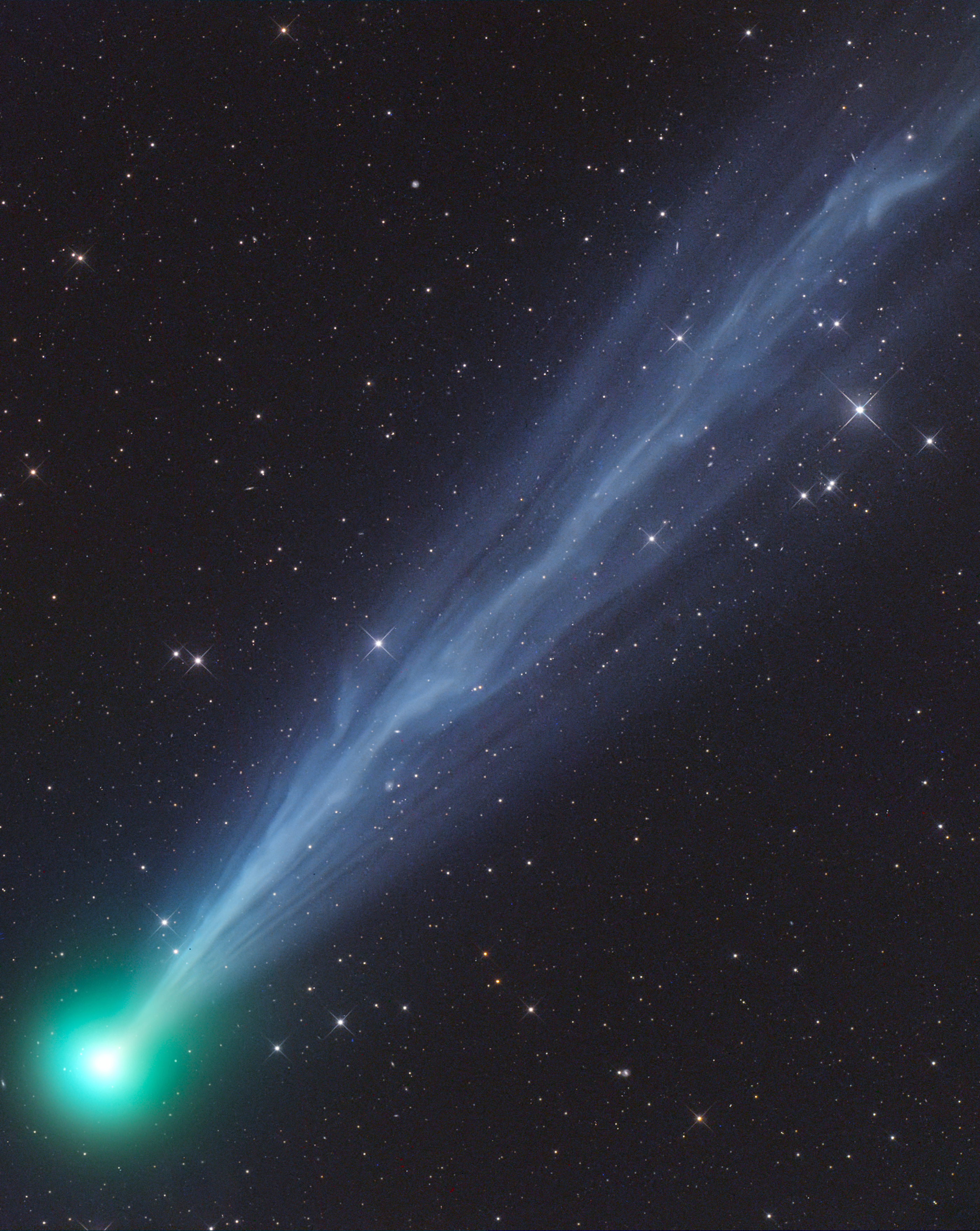
(opens in new tab)
The comet 2020F8 SWAN is a visitor from the Oort Cloud that surrounds the solar system. The comet may have disintegrated completely after it appeared in the southern sky in May 2020, but it left behind this indelible image of its gas-rich tail, captured by Gerald Rhemann from Austria.
(Equipment: ASA Astrograph 12" telescope at f/3.6, ASA DDM 85 mount, FLI ML16200 camera, LRGB composite, 21 minutes total exposure)
The Eyes of Clavius
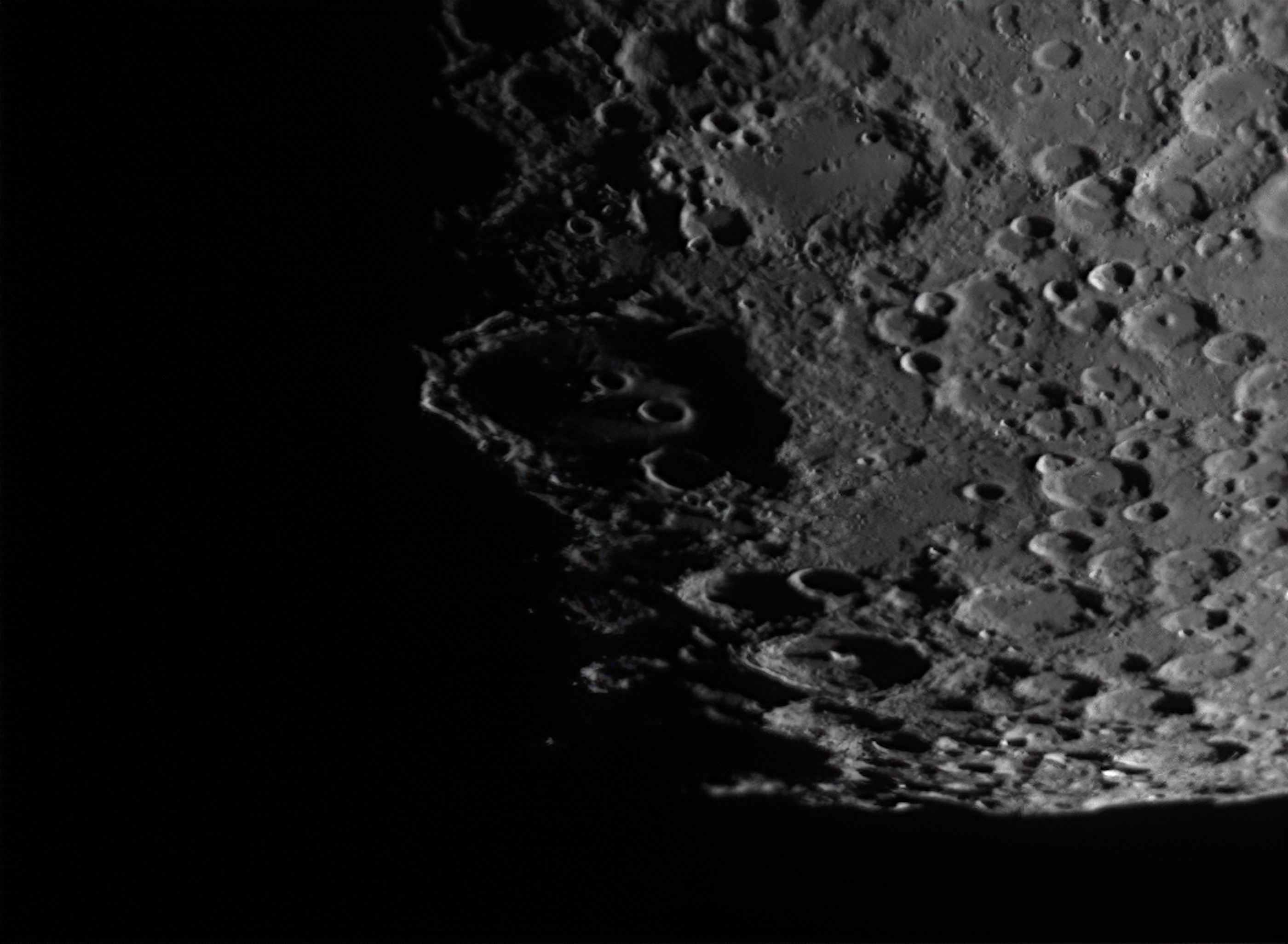
(opens in new tab)
The crater Clavius in the southern highlands of the moon appears to harbor two eyes —— actually smaller craters — illuminated by the rising sun, in this shot taken by Thea Hutchinson from London in February 2021.
(Equipment: Celestron C11 HD Schmidt-Cassegrain telescope (opens in new tab) at f/10, Baader filter, Celestron CGE Pro mount, ZWO ASI174MM camera, 1,200 x 5.895-millisecond exposures)
The Full Moon in Moscow
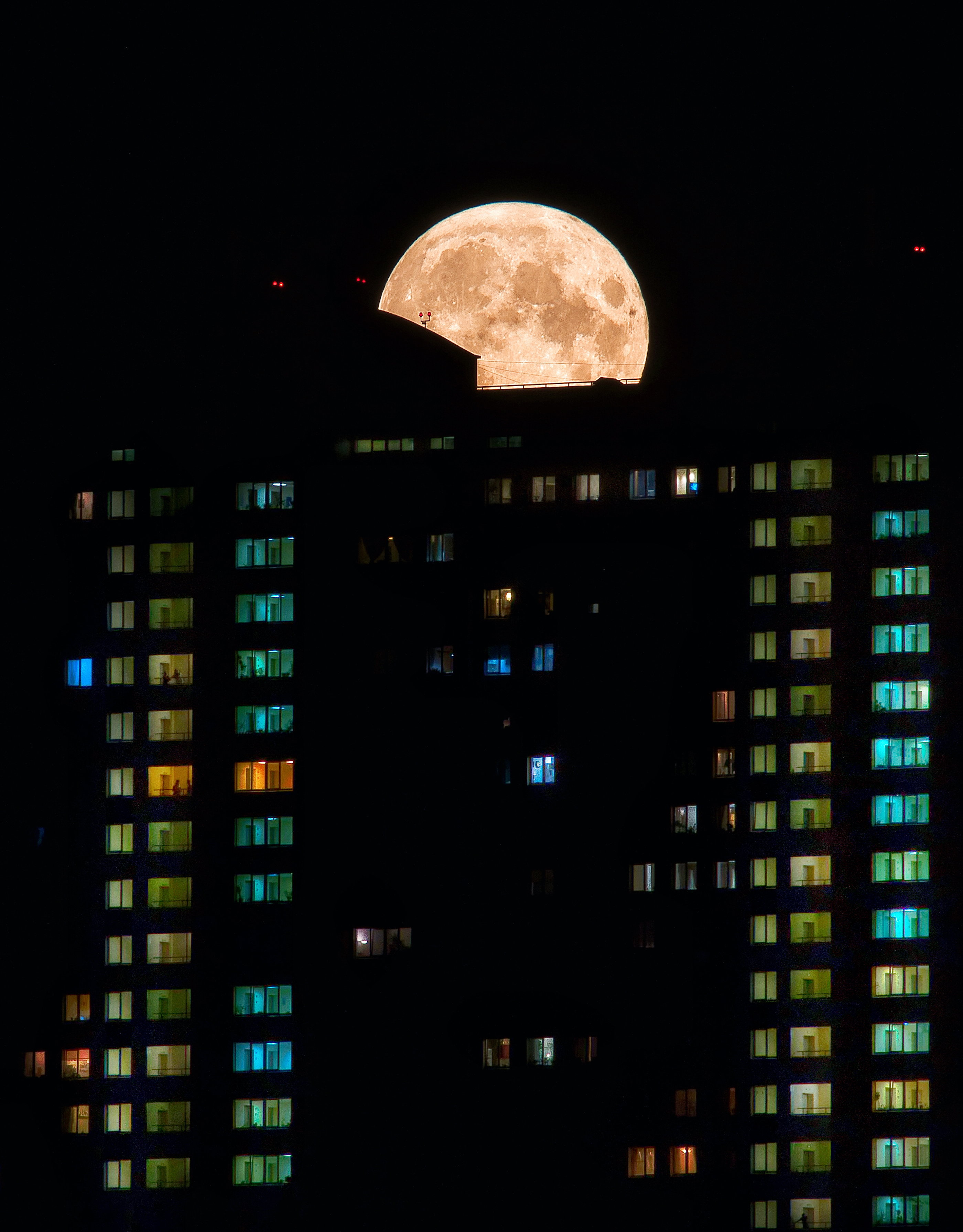
(opens in new tab)
The full moon rises over Hodynka, a park in Moscow that was once an airfield. Moscow often has cloudy weather, but the sky cooperated with photographer Anna Kaunis in this July 2020 shot.
(Equipment: Nikon Z6 camera (opens in new tab), 200–500mm lens at 500 mm f/22, ISO 400, 0.25-second exposure)
The Magnetic Field of our Active Sun
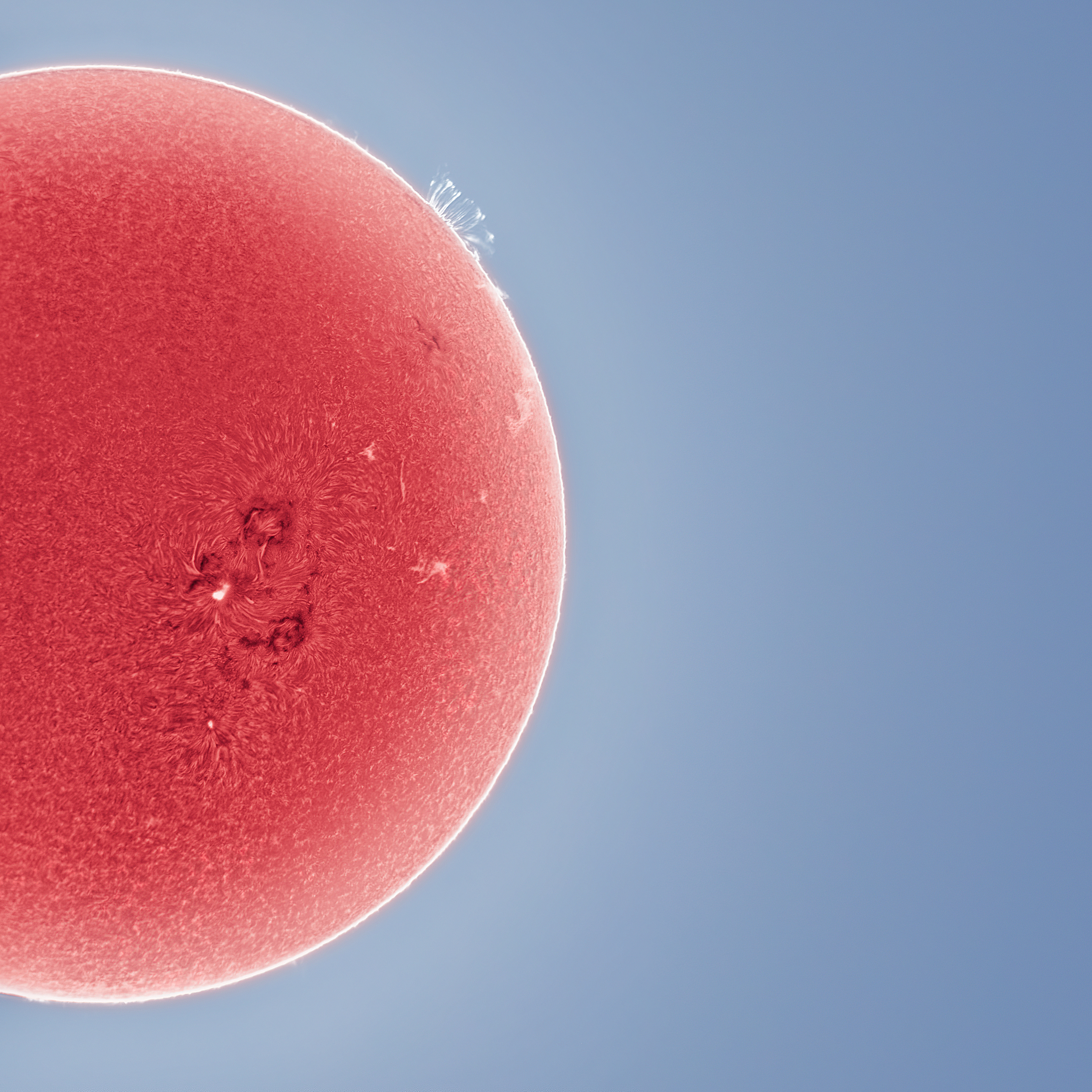
(opens in new tab)
Magnetic field lines shimmer on the sun in this image that was originally captured in black and white. Andrew McCarthy captured this shot after a large solar flare in November 2020.
(Equipment: Coronado Solarmax III telescope (opens in new tab) at f/5, Hobym Traveller mount, ZWO ASI178MM camera, 6-millisecond exposure)
The Milky Way on the Ancient Village
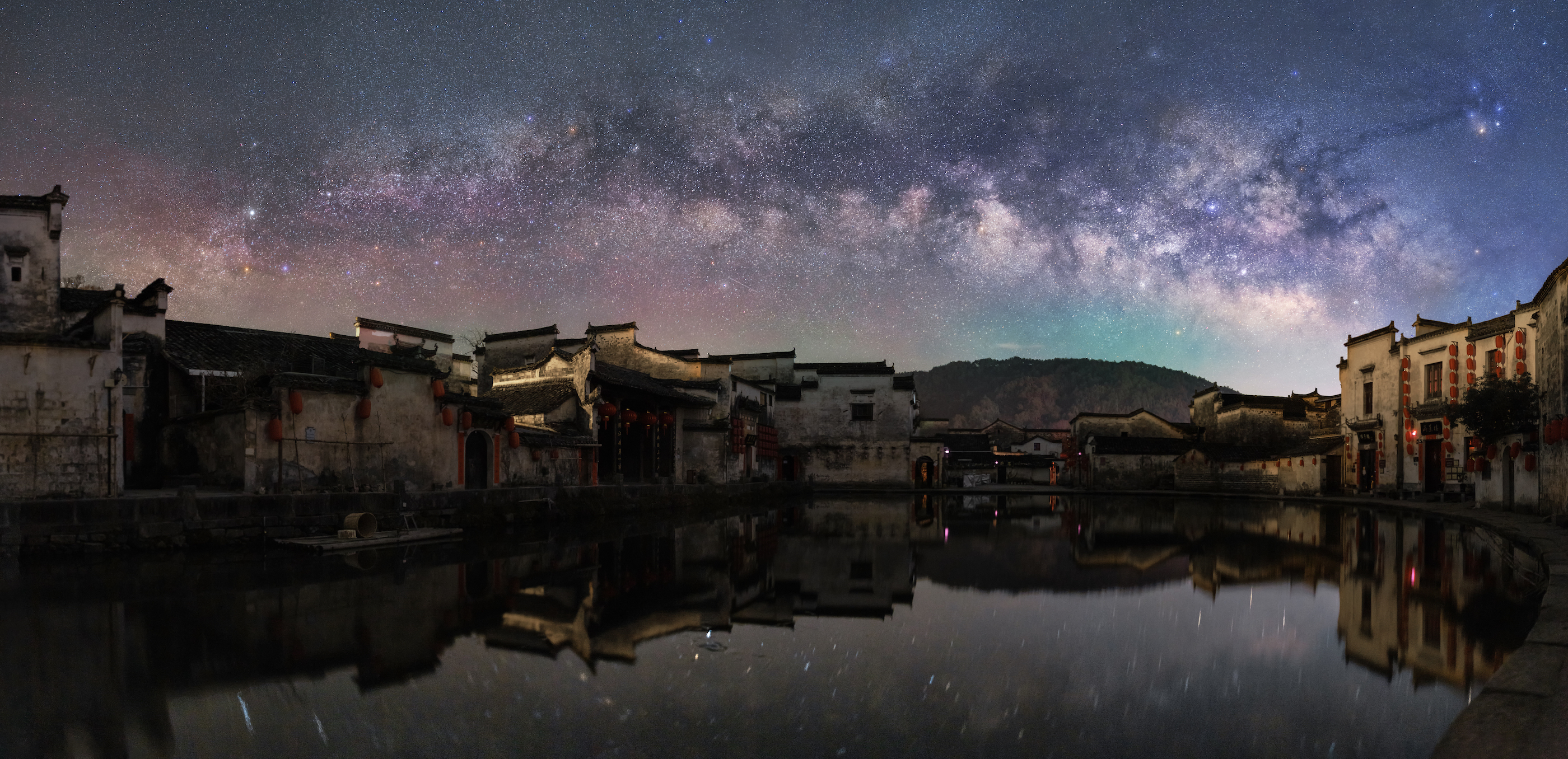
(opens in new tab)
The stars sparkle above the village of Hongcun near Huangshan Mountain in Anhui province, China. Hongcun has been populated for at least 900 years and is a World Heritage Site. Zhang Xiao captured this photo after 1 a.m. when the streetlights had gone out.
(Equipment: Canon EOS 6D Mark II camera (opens in new tab), 35 mm f/1.4 lens, ISO 2500, 20 x 13-second exposures)
The Rose
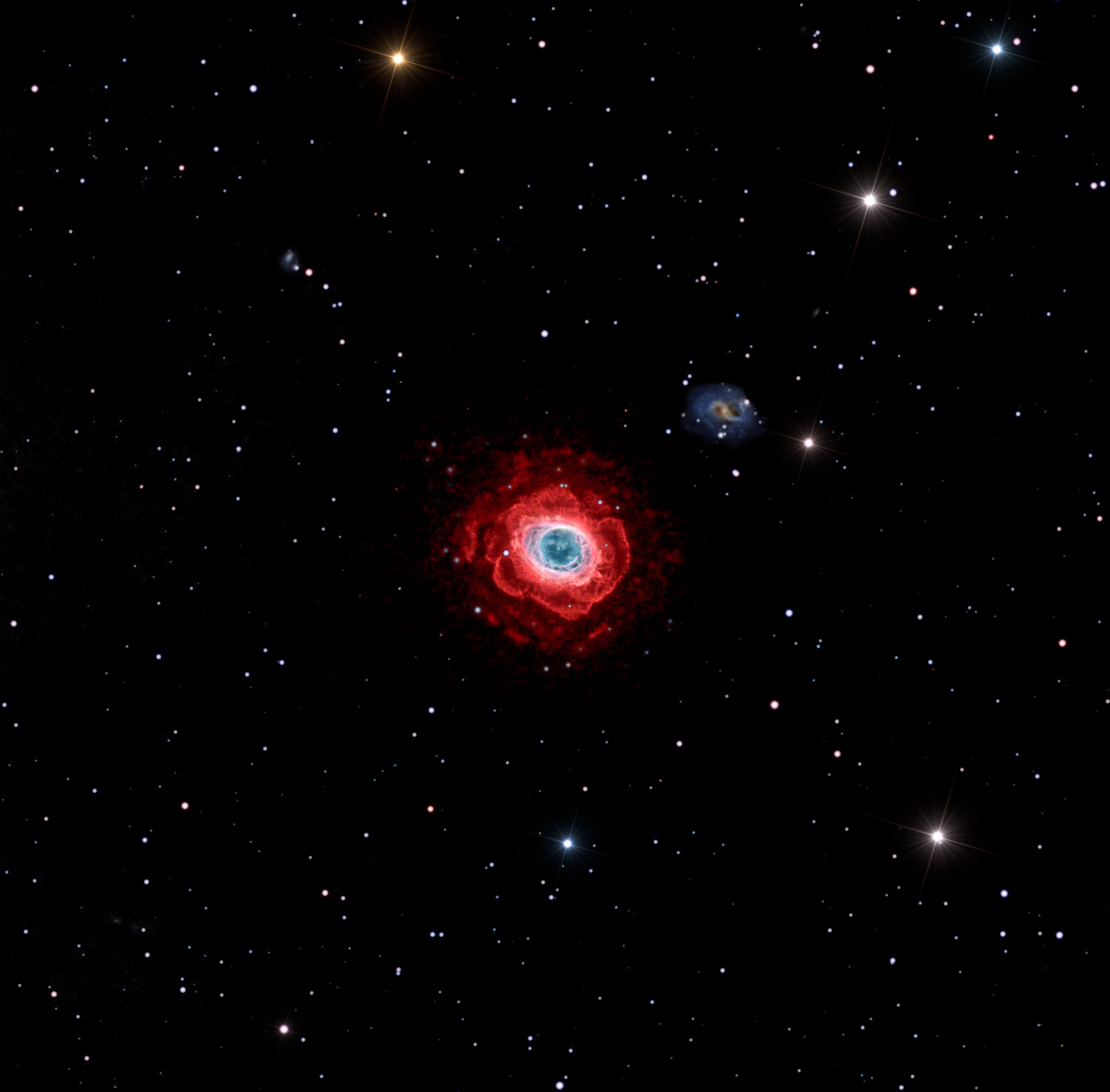
(opens in new tab)
This image of Messier 57, by Josep Drudis, shows hydrogen (red), oxygen (green and blue) and nitrogen (deep red) in the planetary nebula that is also known as the Ring Nebula. A planetary nebula is what's left over after a star similar to the sun dies.
(Equipment: Planewave CDK24 telescope at f/6.5, Astrodon filters, Planewave L600 mount, FLI PL16803 camera, RGB-Ha-NII-OIII composite, 63 hours total exposure)
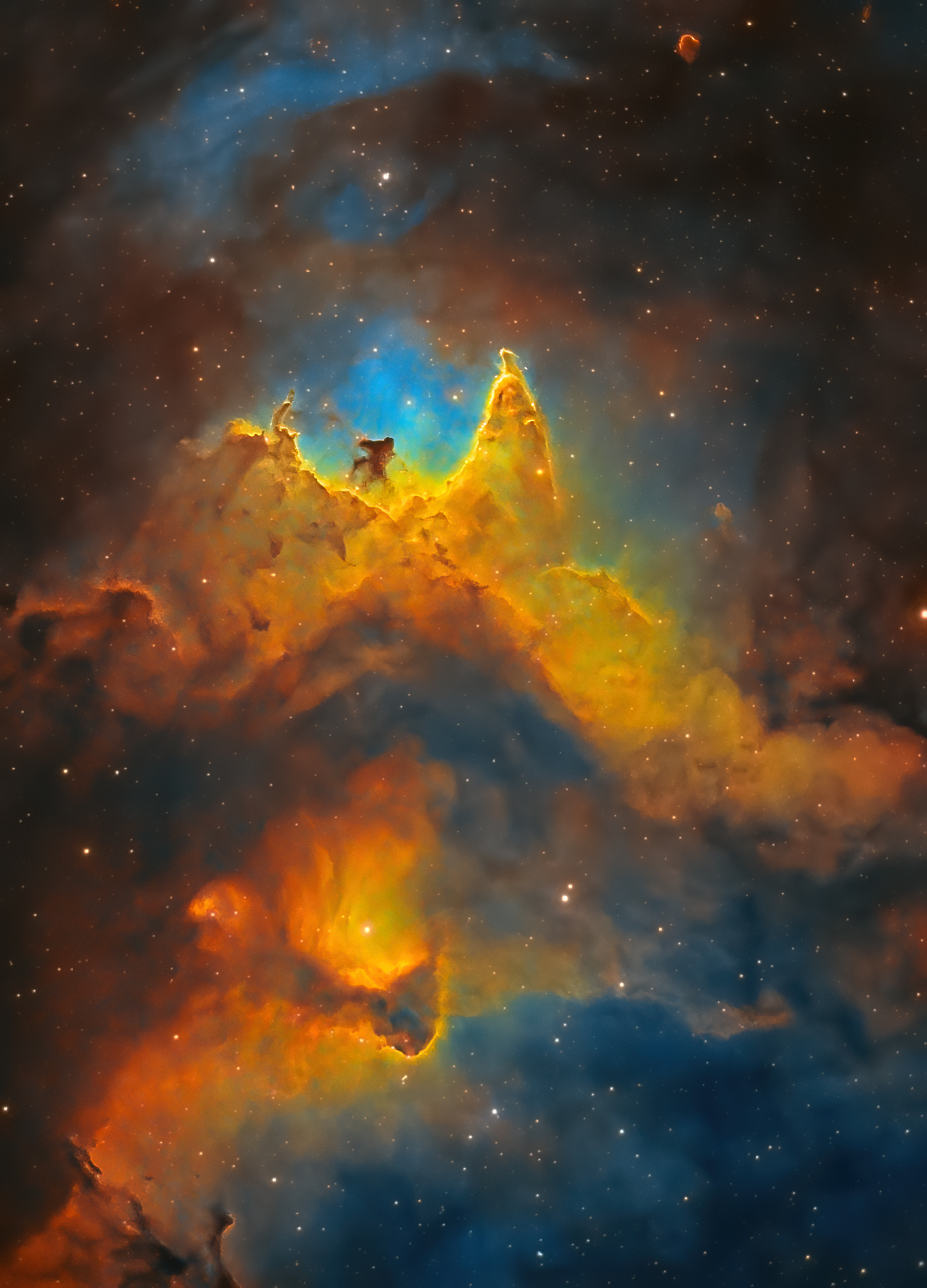
(opens in new tab)
The Soul of Space
Photographer Kush Chandaria who captured this image of the Soul Nebula is just 13 years old. The result of over 14 hours of exposure, this image shows the fine detail of the nebula, which is in the constellation Cassiopeia.
(Equipment: Celestron NexStar Evolution 9.25" telescope (opens in new tab) at f/6.3, Celestron focal reducer, Astronomik filters, SkyWatcher EQ6-R Pro mount, ZWO ASI1600MM Pro camera, Ha-SII-OIII composite, 14.4 hours total exposure)
The Star Observer
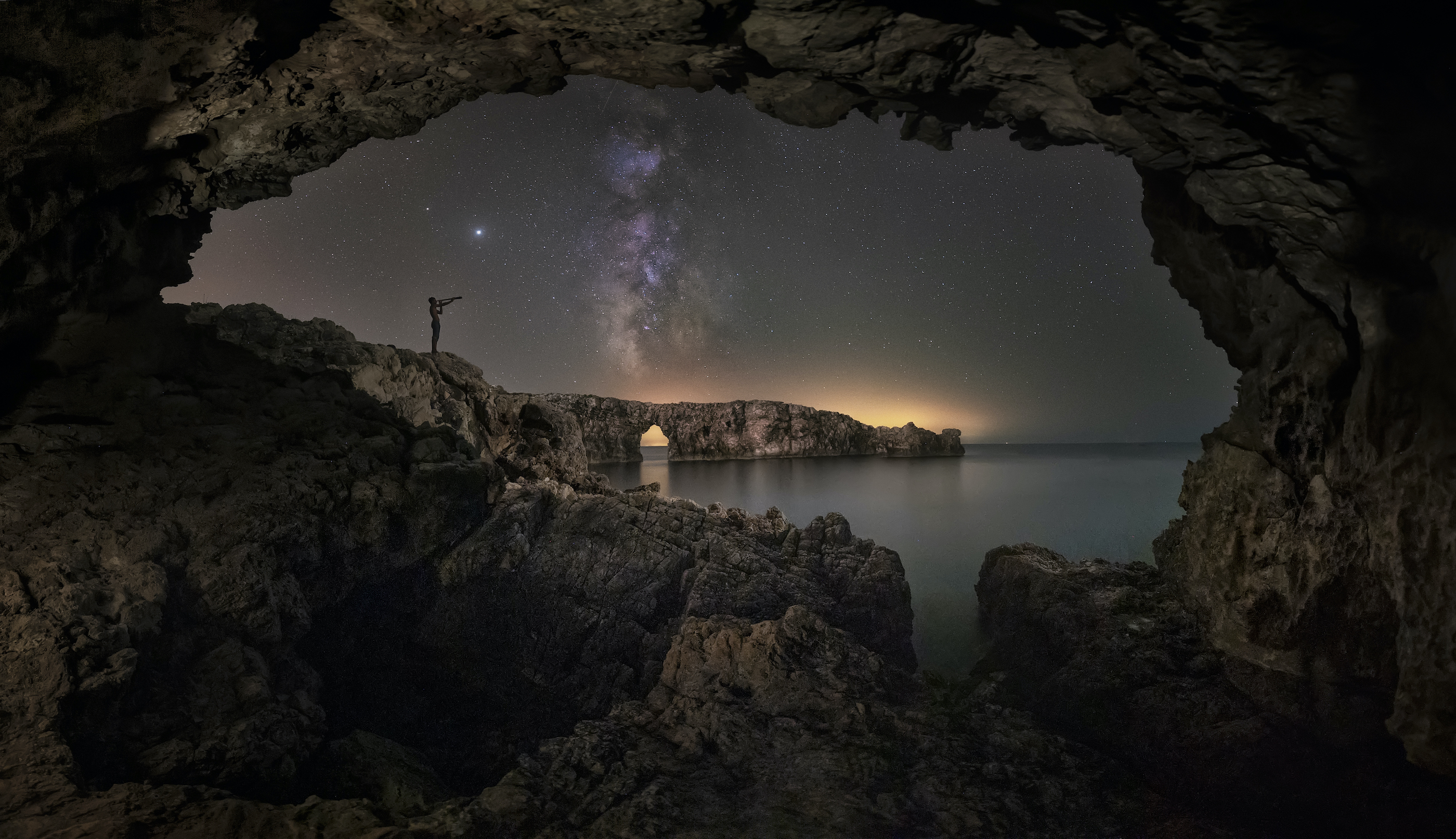
(opens in new tab)
A natural stone bridge on the island of Menorca, Spain, stands under a vertical expanse of the Milky Way in this image taken by Antoni Cladera Barceló in July 2020. The Mediterreanean island is a Starlight Reserve due to its lack of light pollution.
(Equipment: Nikon Z6 camera (opens in new tab), 14 mm f/2.8 lens, ISO 6400, 6 x 15-second exposures)
The Tumult of the Sun
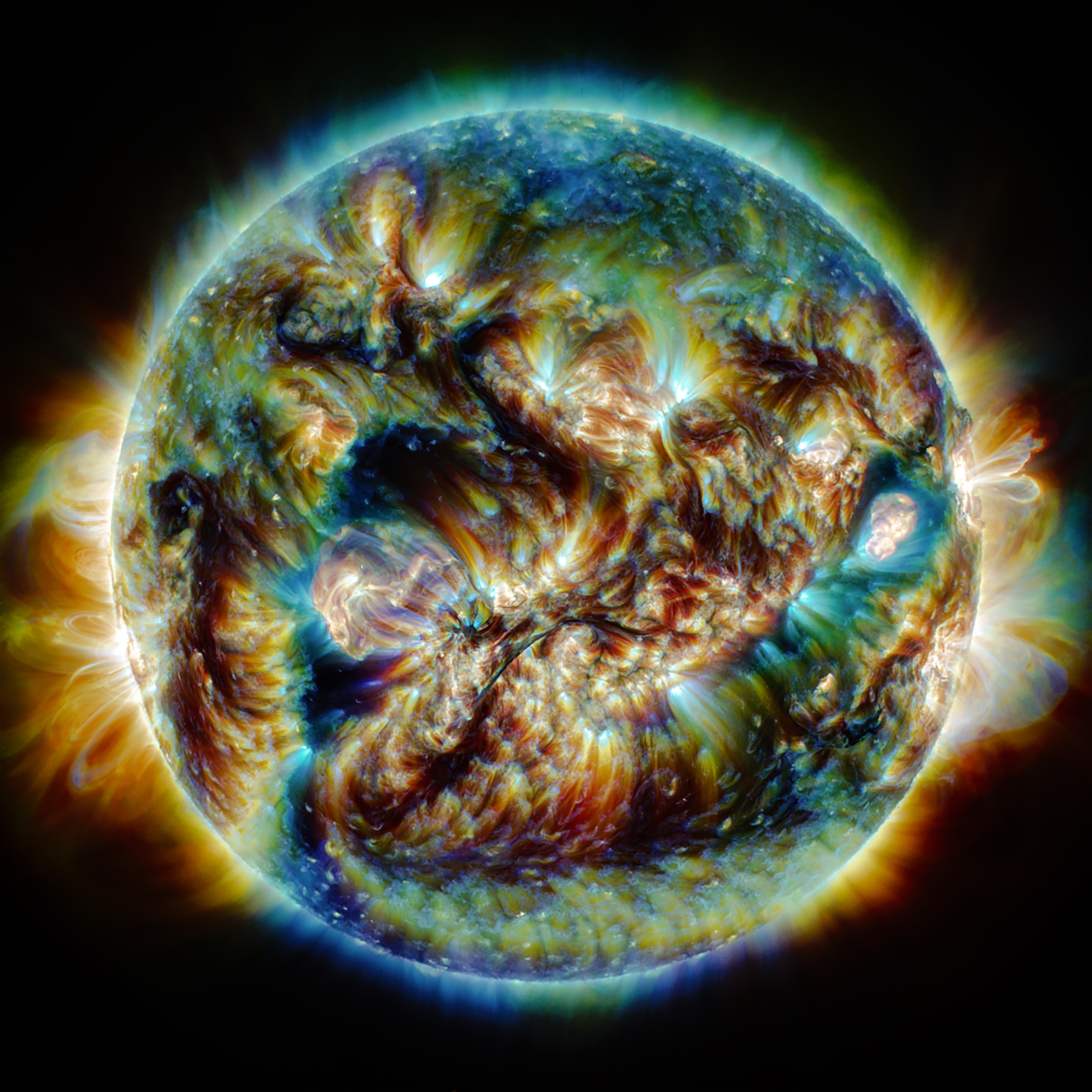
(opens in new tab)
This turbulent image of the sun, taken by Hassan Hatami of Iran, is stitched together from the archives of the Solar Dynamics Observatory. It contains images made with multiple wavelengths of light to show as much detail as possible.
(Equipment: Solar Dynamics Observatory – Atmospheric Imaging Assembly (13 January 2015), AIA 171, 193 and 211 channels, NASA)
Waterfall
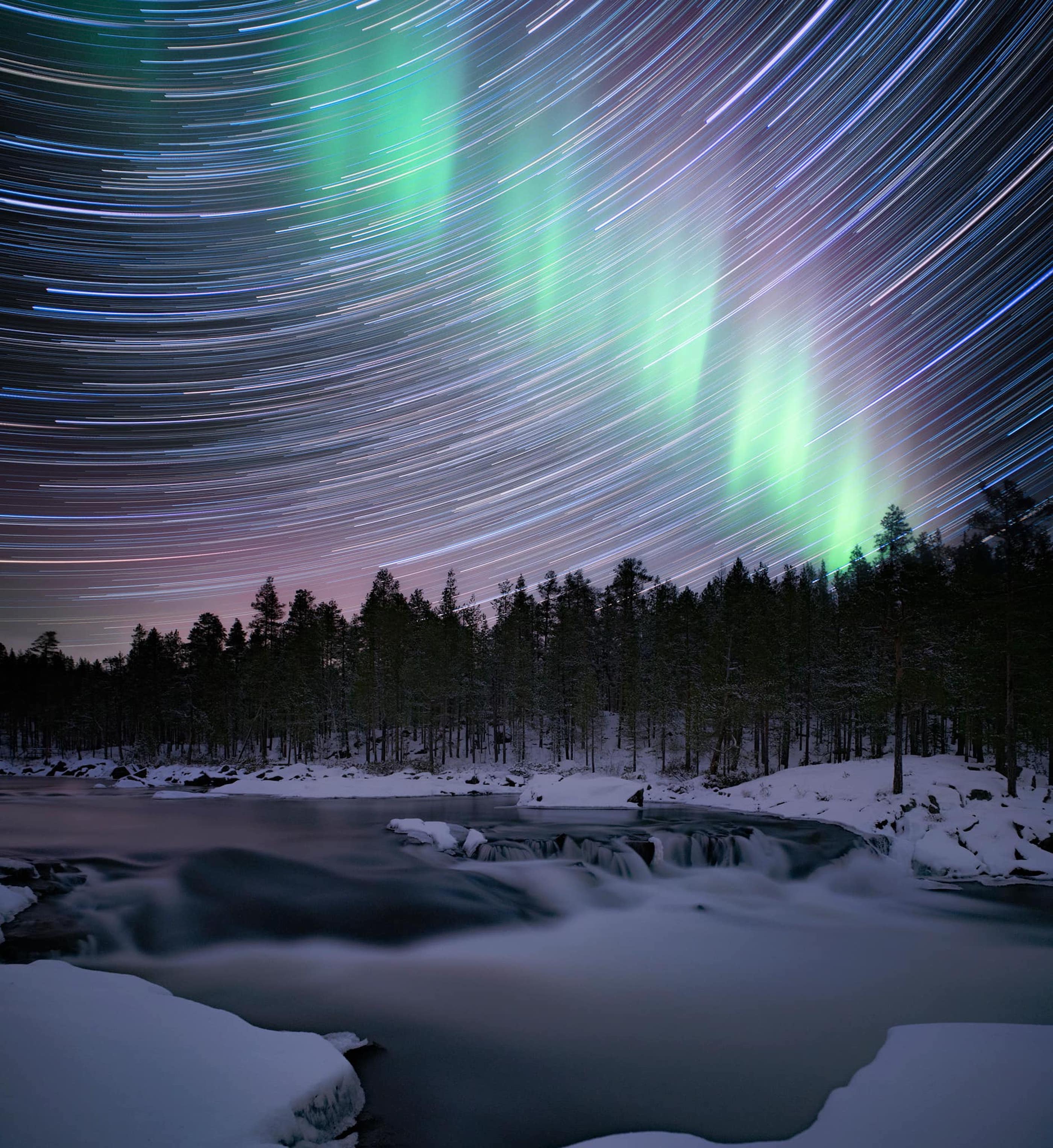
(opens in new tab)
This remote waterfall in Lapland, Sweden, proved a chilly viewpoint for the northern lights. While waiting for the aurora, photographer Anna Dobrovolskaya-Mints trained her camera on the stars, capturing a gorgeous image of star trails and the beginning of the dancing lights.
(Equipment: Sony A7R3 camera (opens in new tab), Leica Summicron-M 28 mm f/2 lens; foreground: 28 mm lens at f/5.6, ISO 1600, 3 x 151-seconds; sky: 28 mm lens at f/2, ISO 3200, 587 x 10-second exposures)
Originally published on Live Science.
makinsonfoughurpite.blogspot.com
Source: https://www.livescience.com/31411-rain-clouds-satellite-image.html
0 Response to "The Man to Send Rain Clouds Theme of Continuity and Change"
Post a Comment